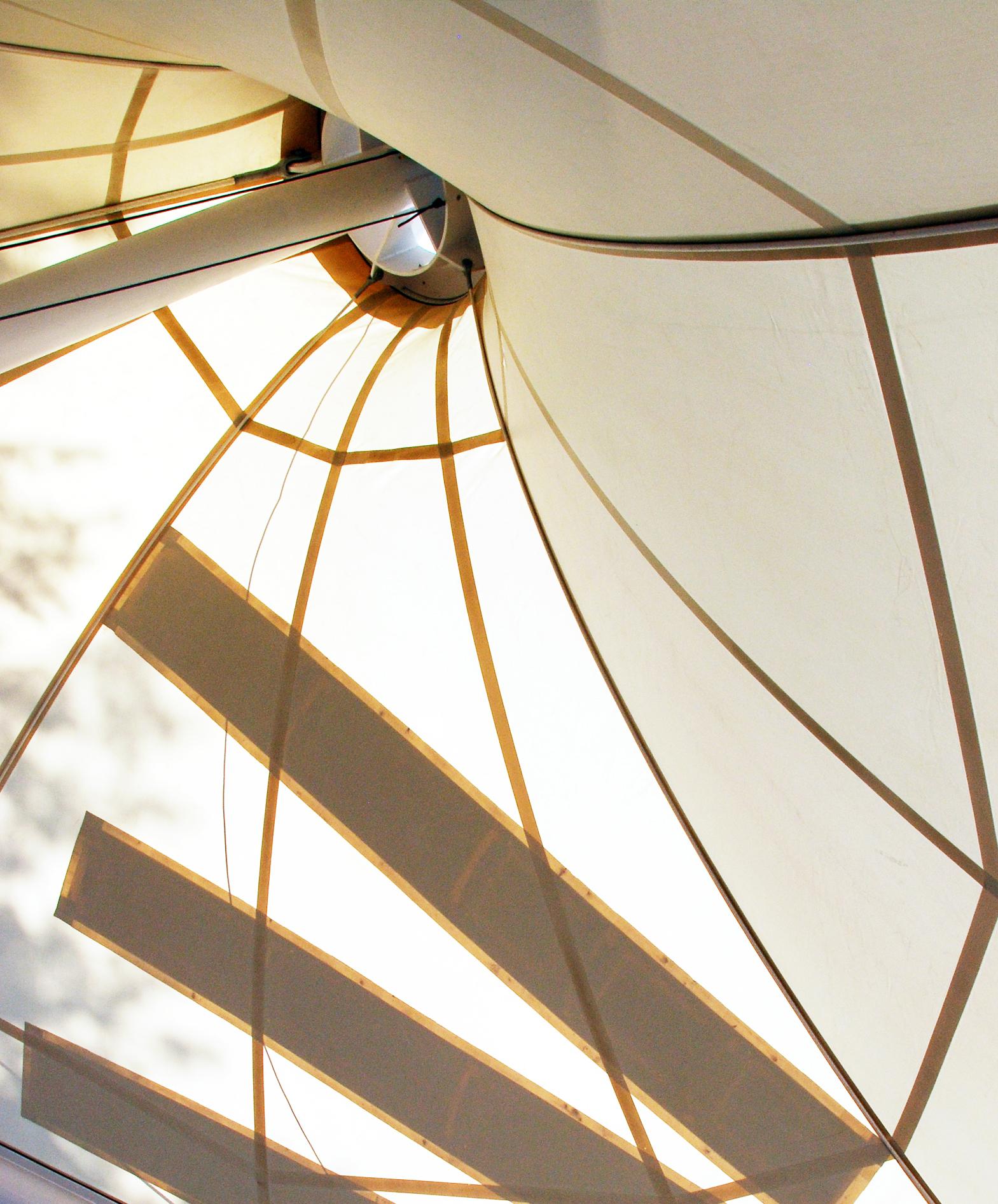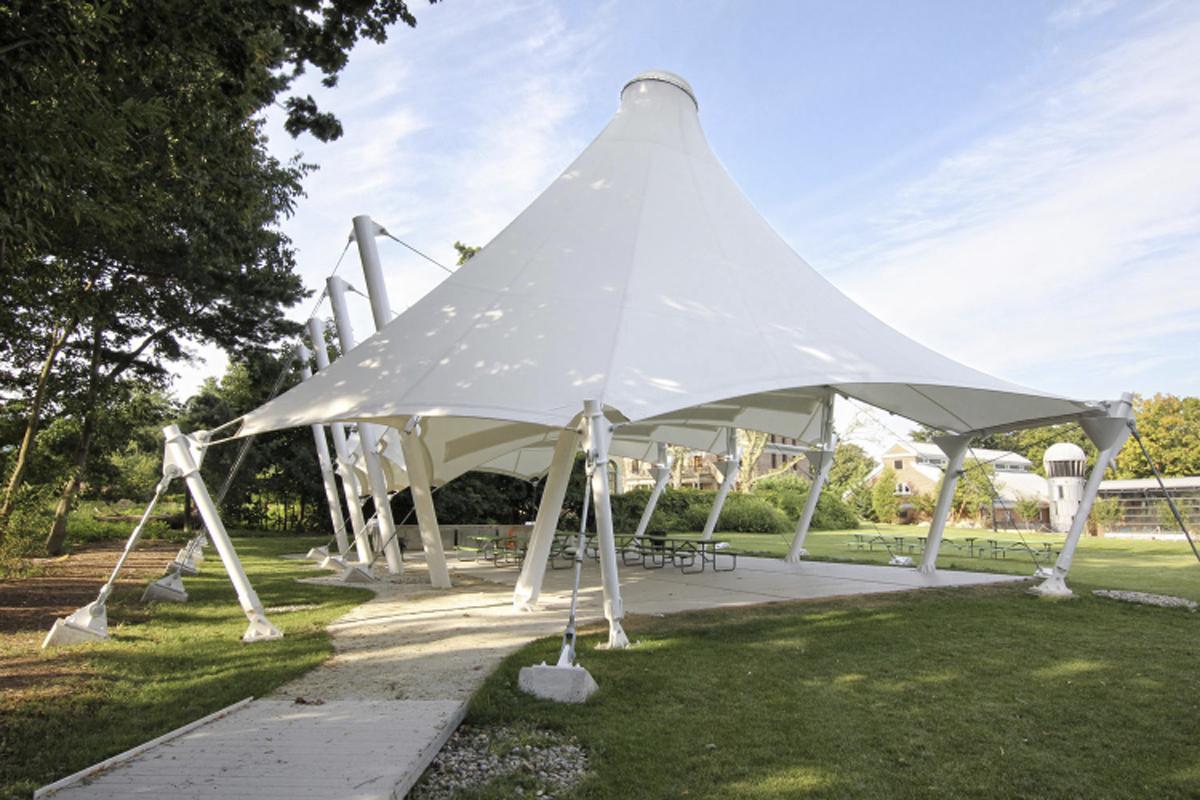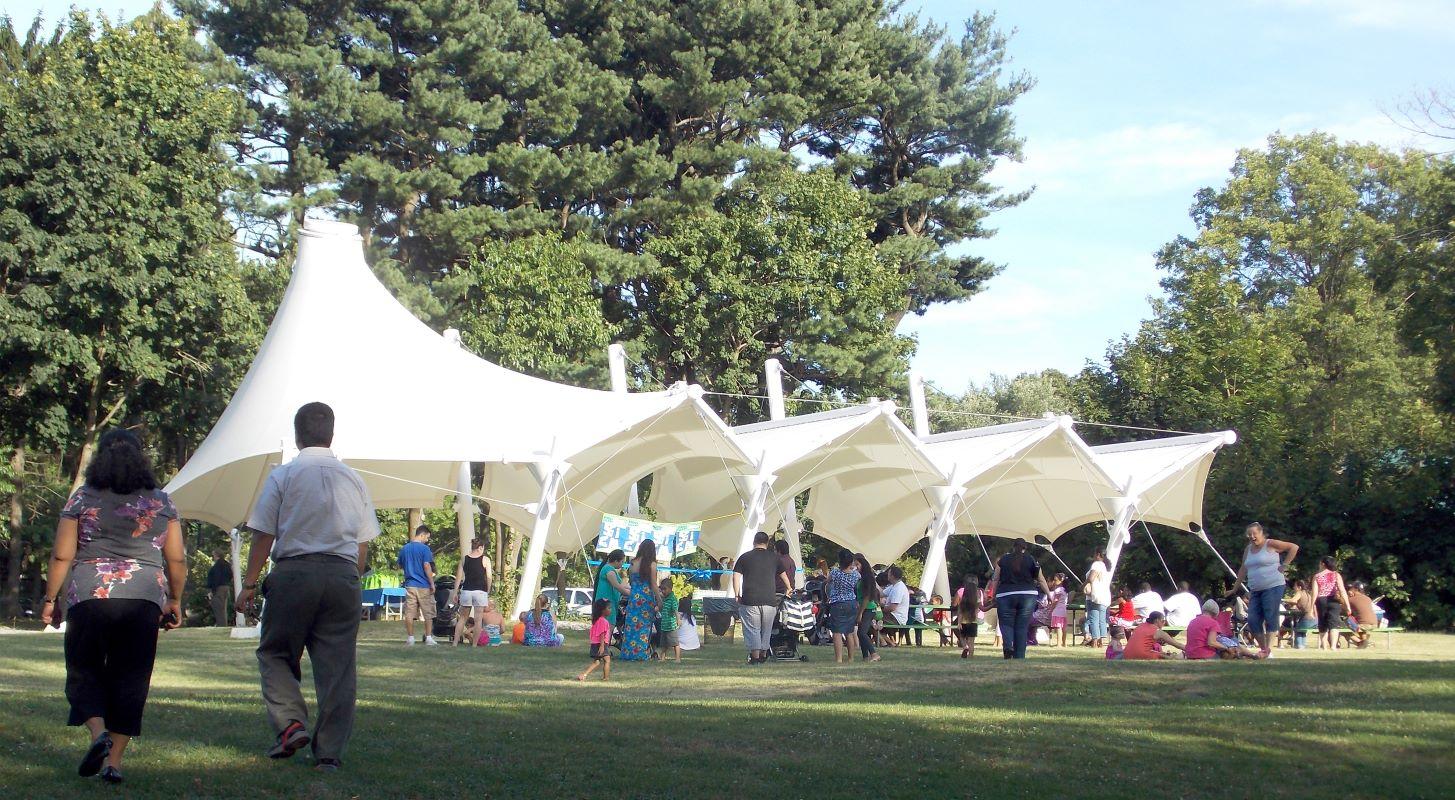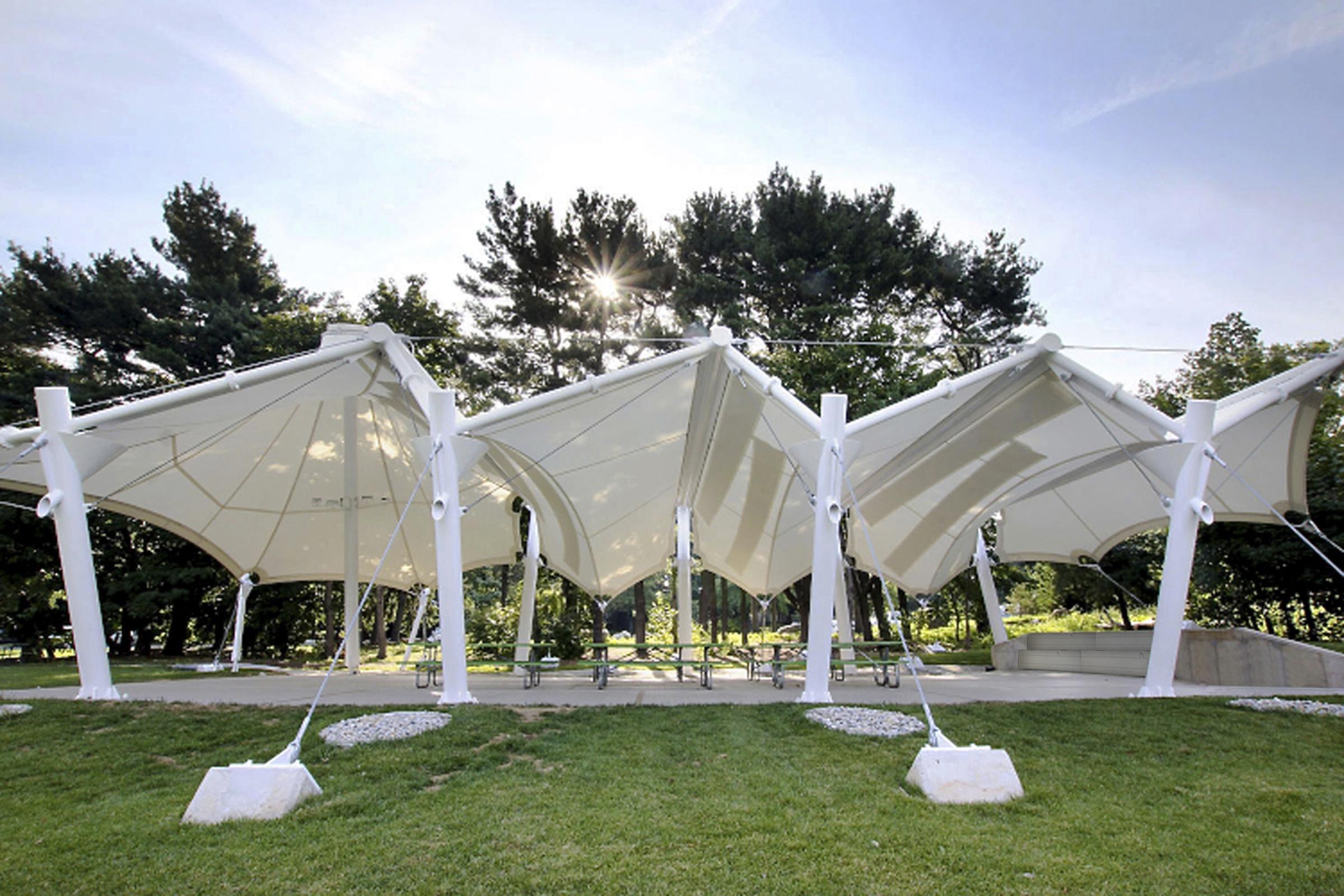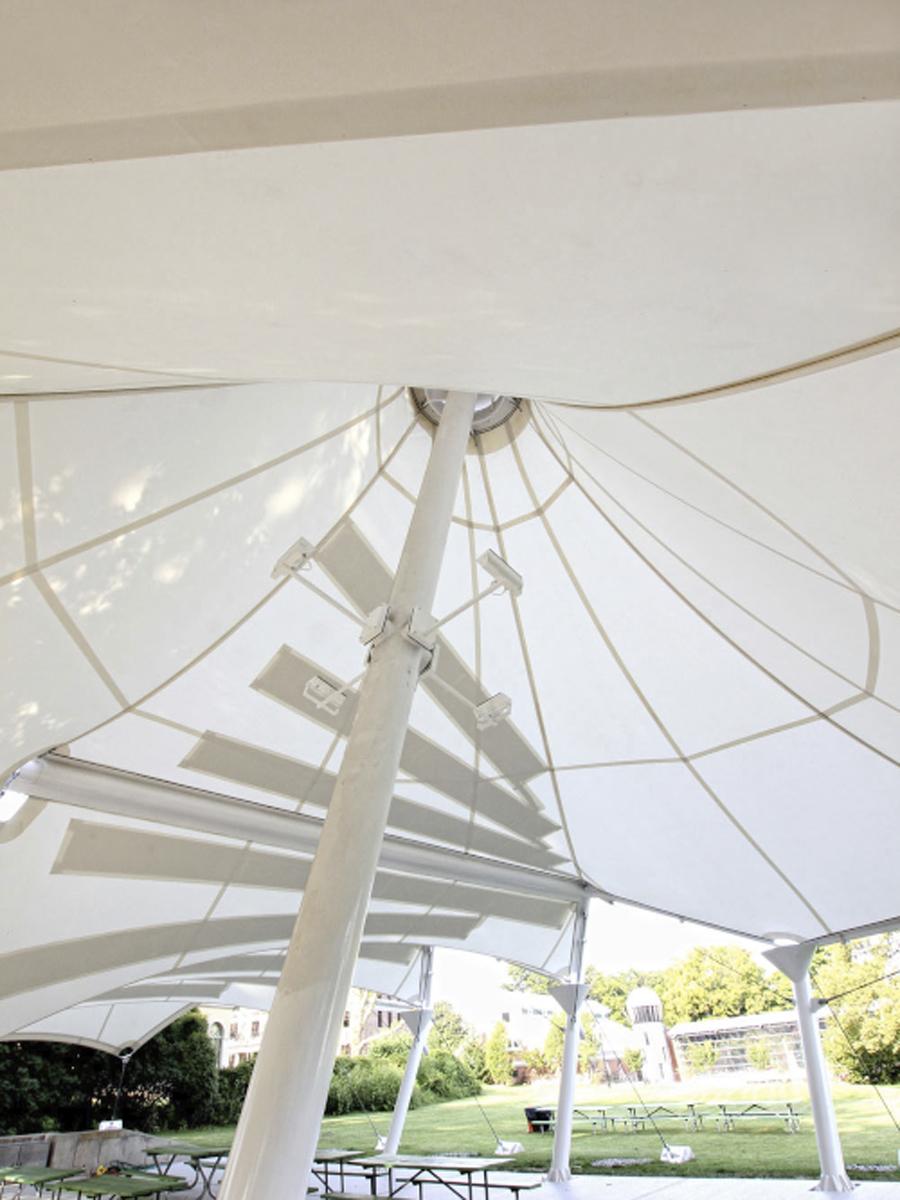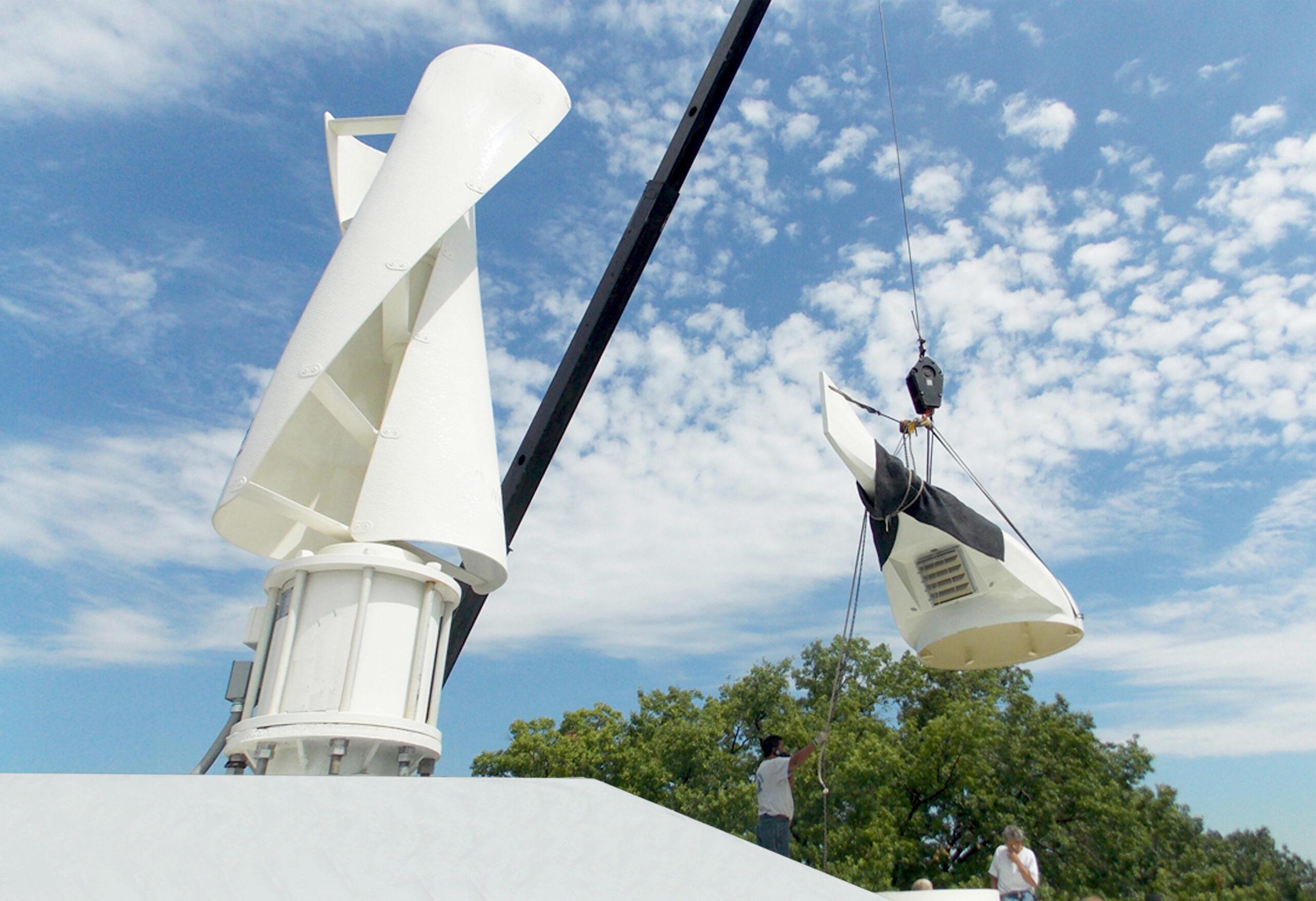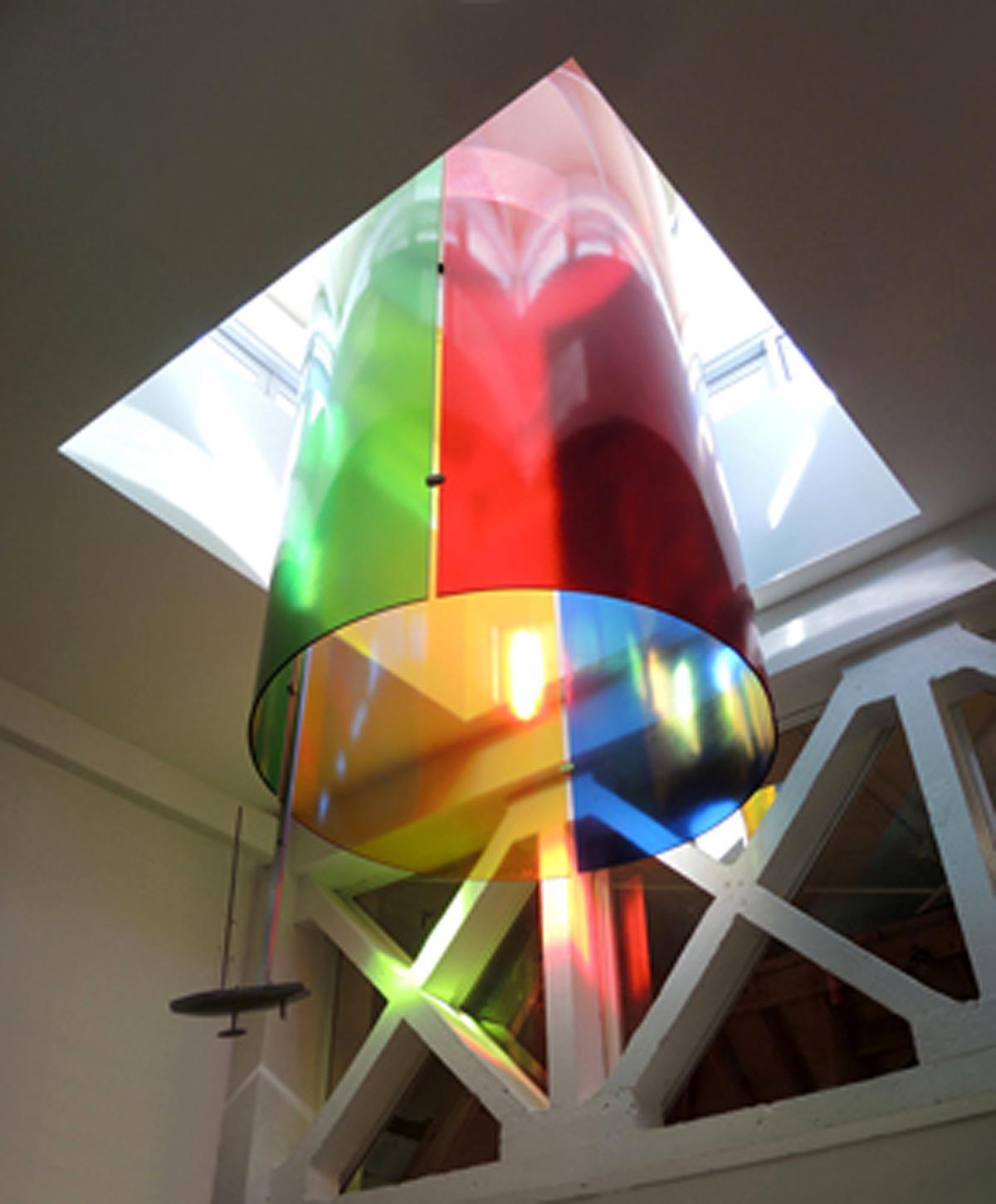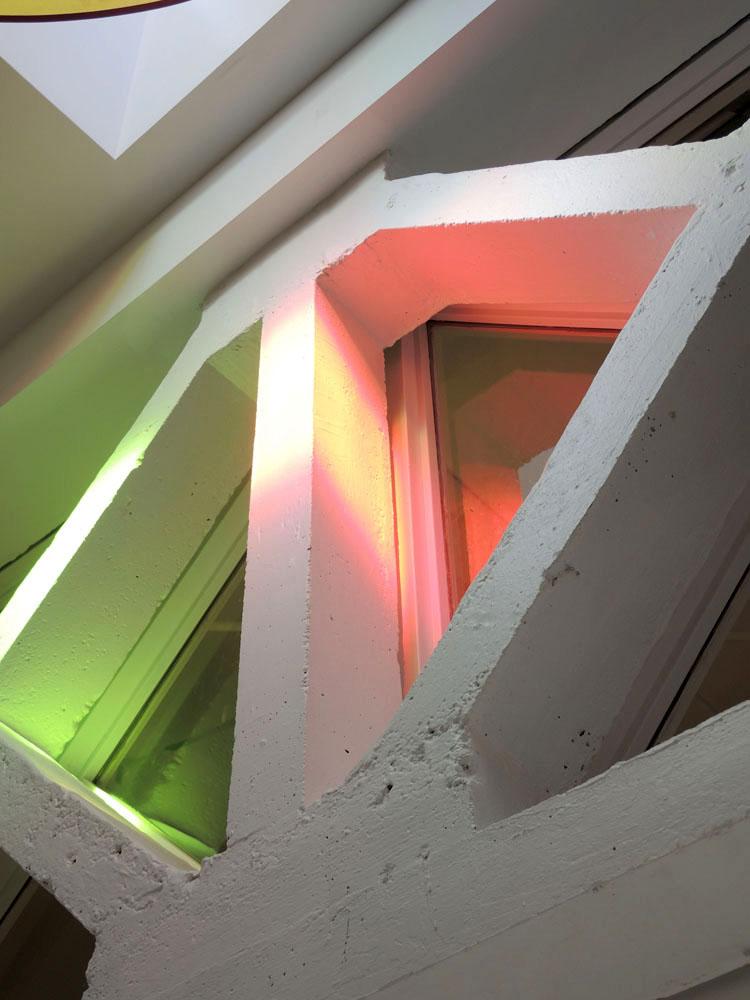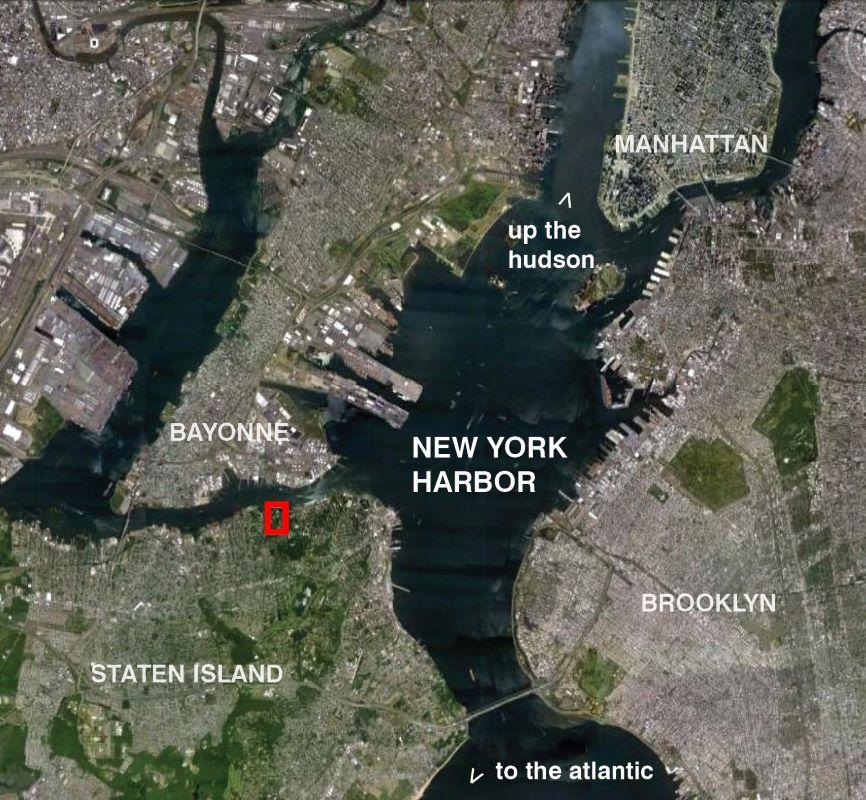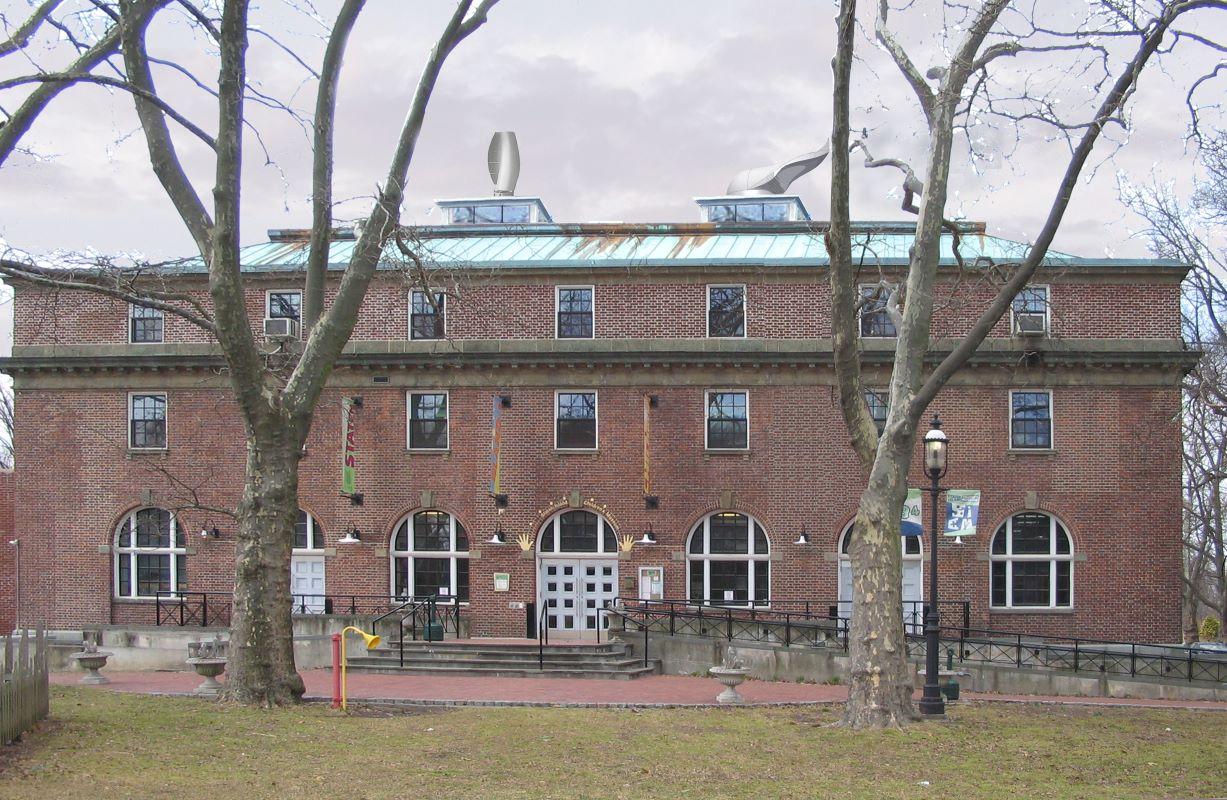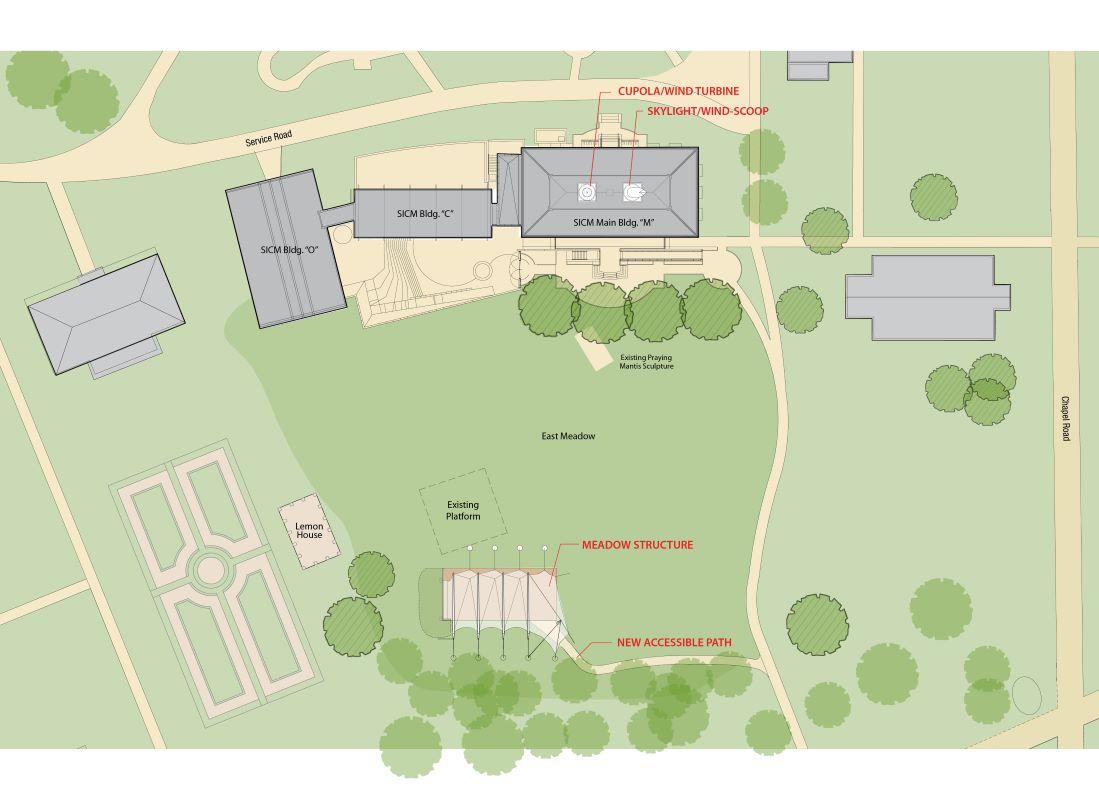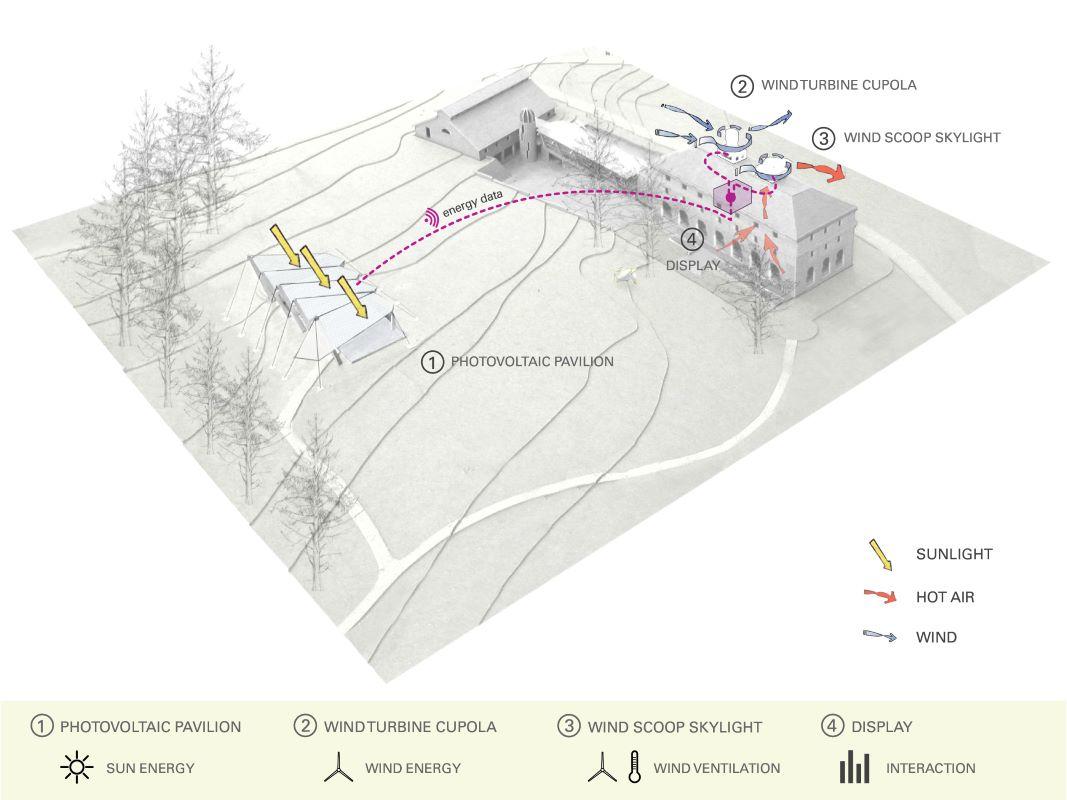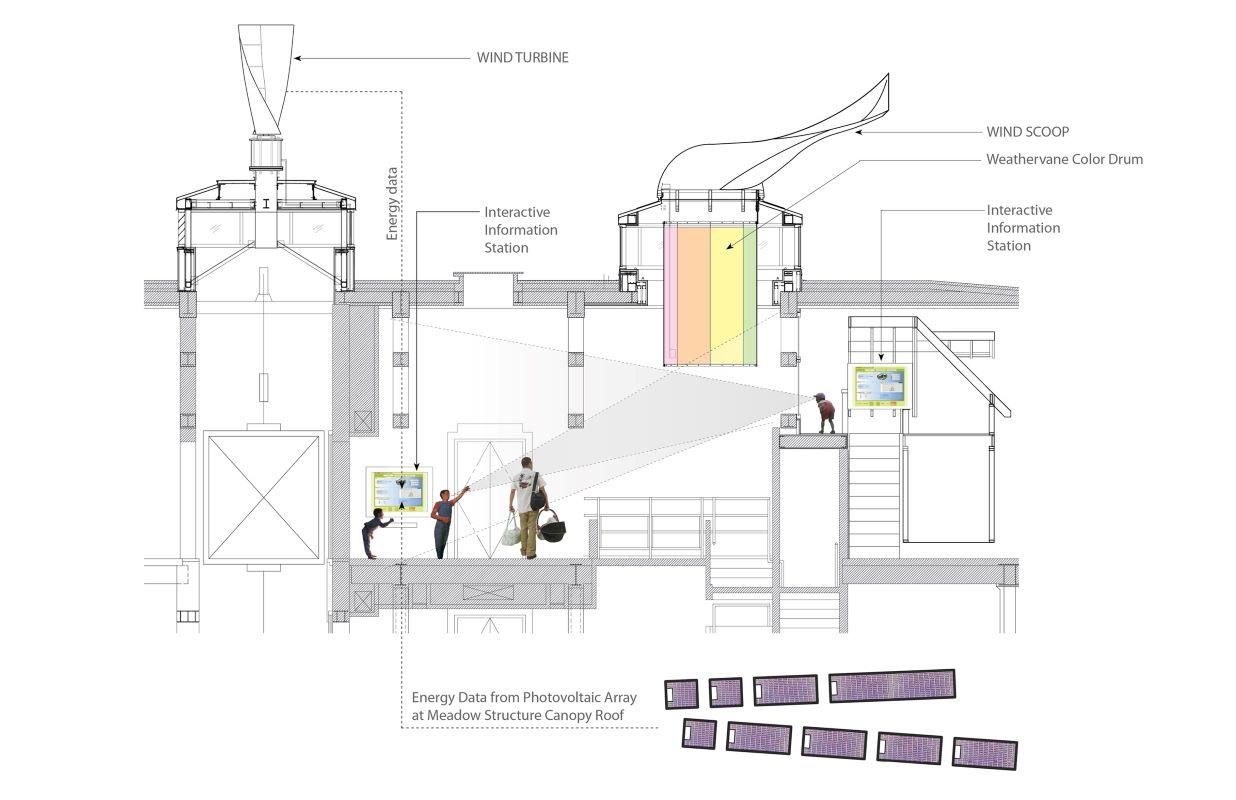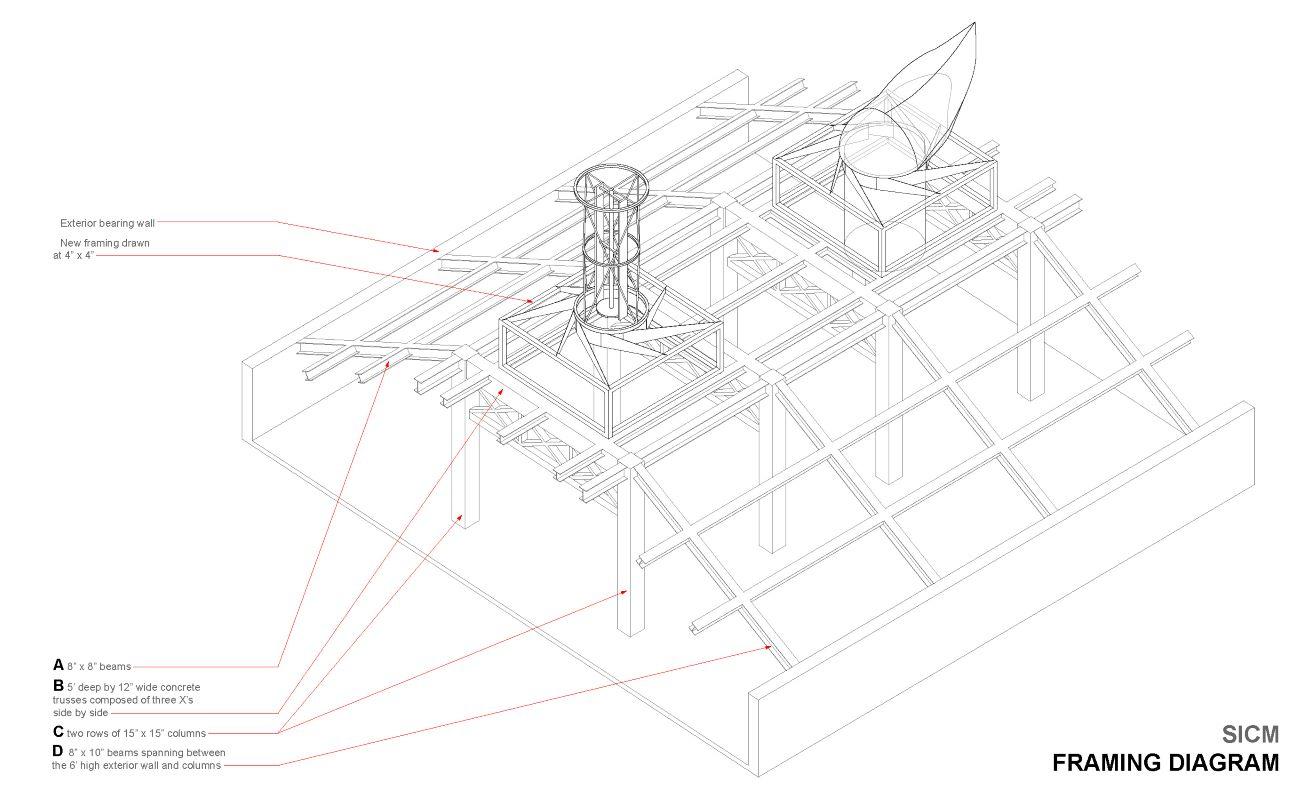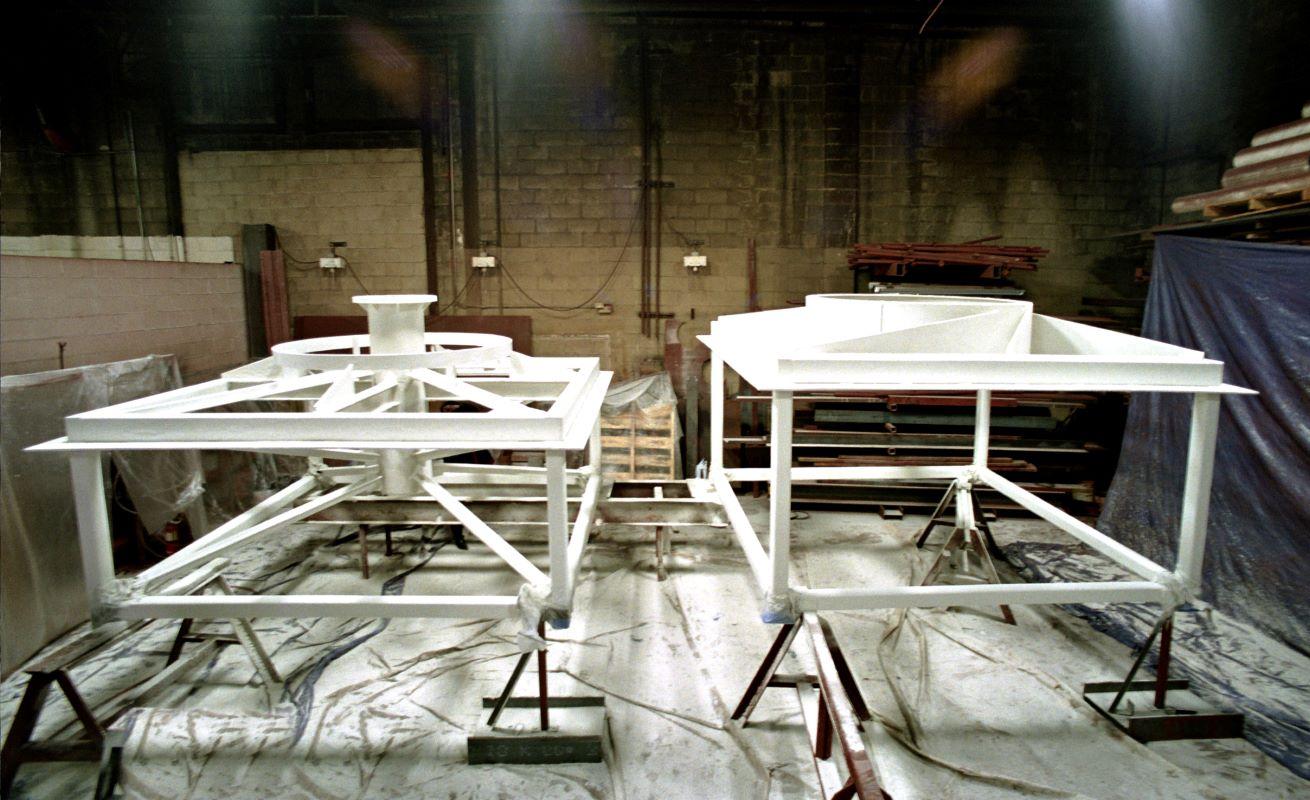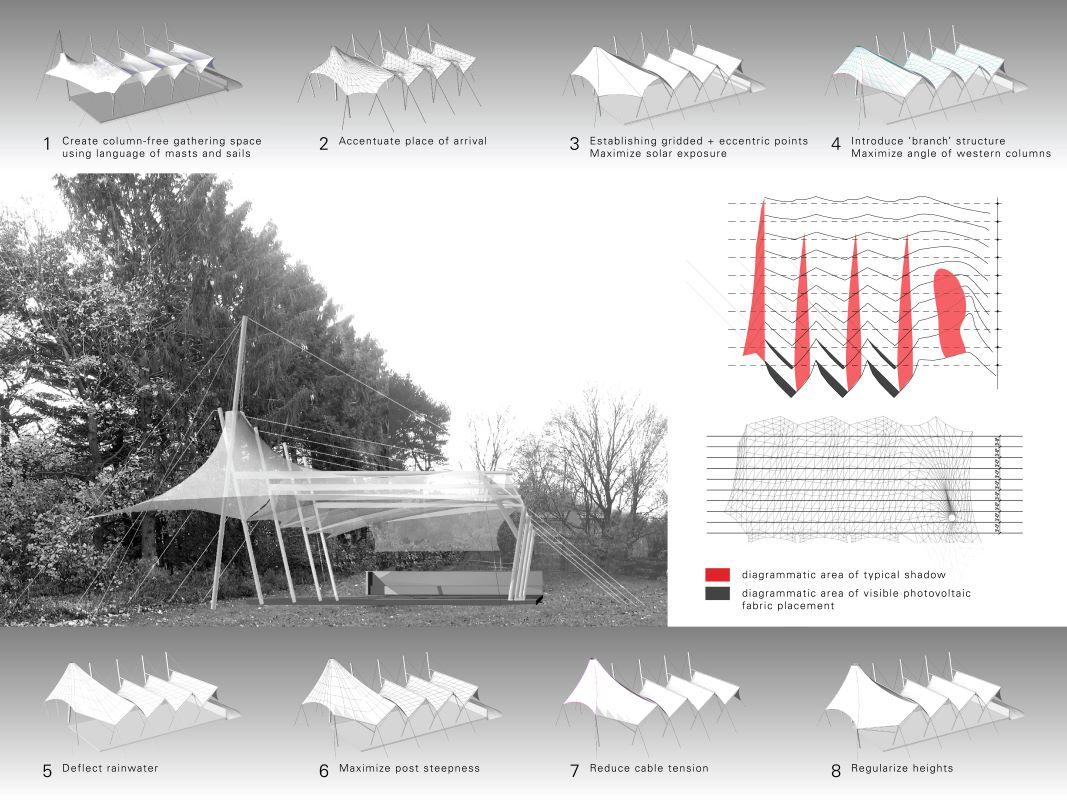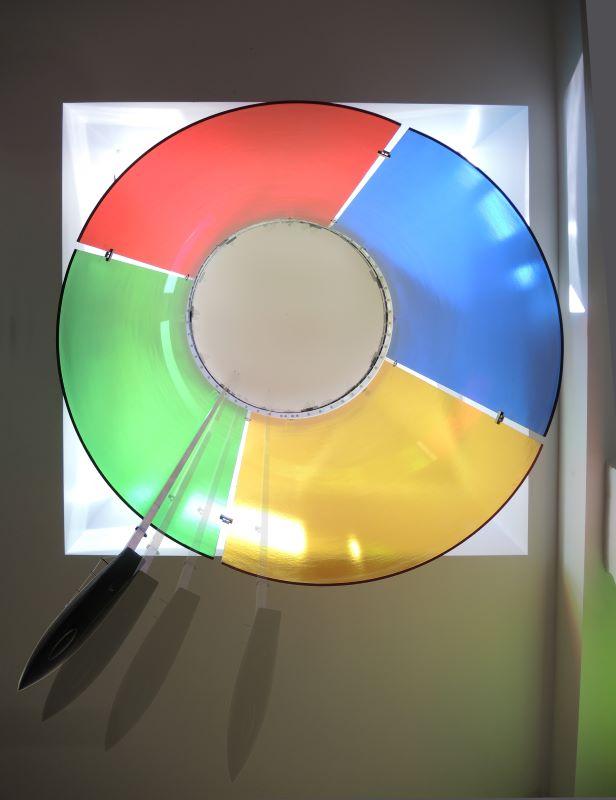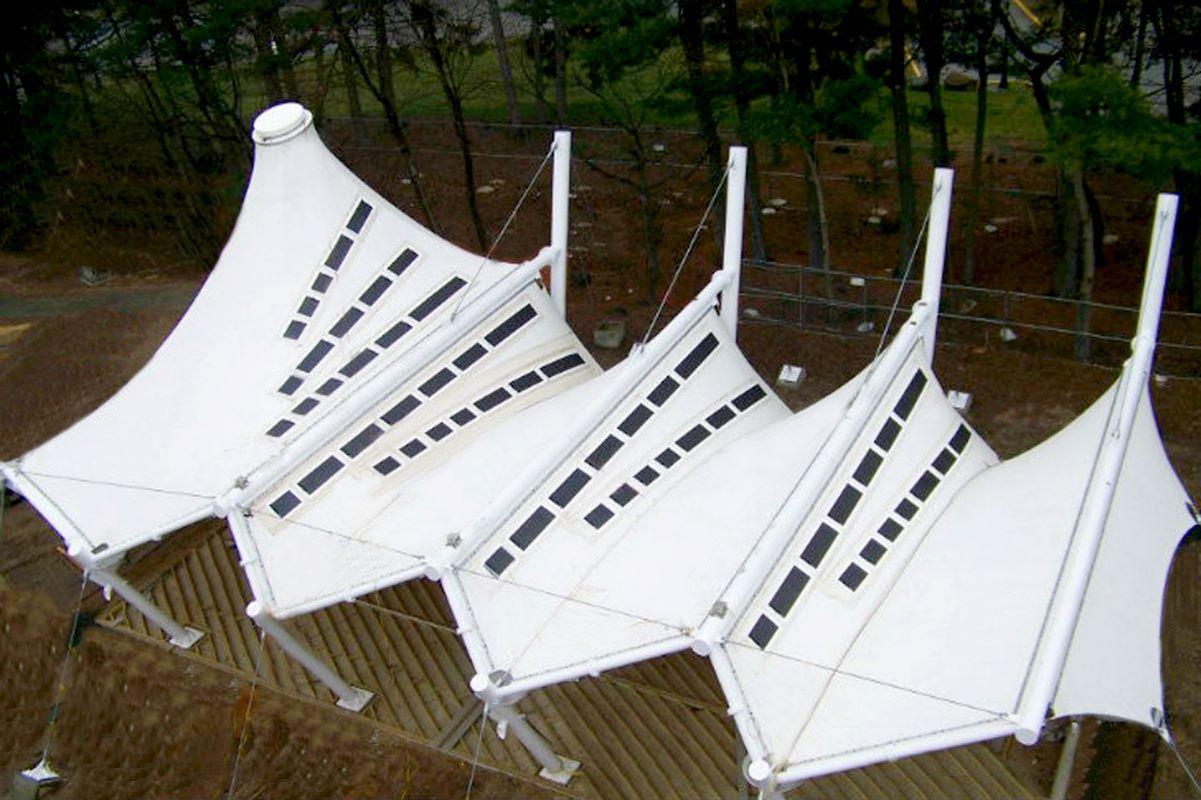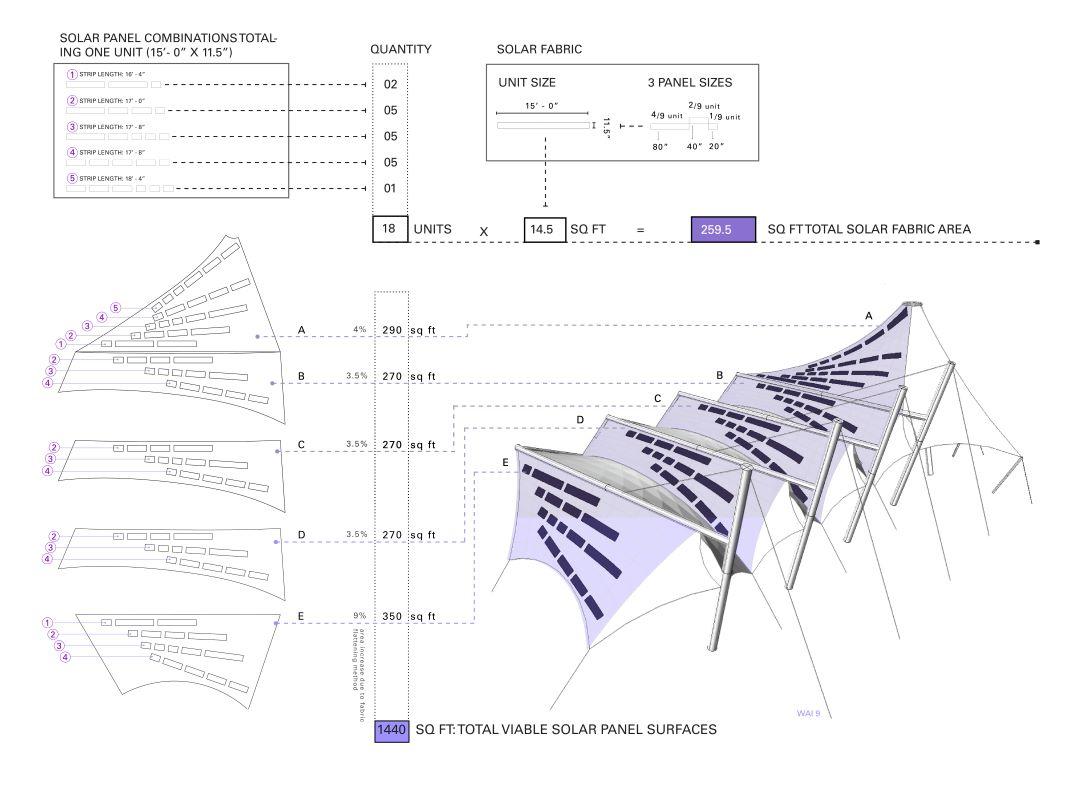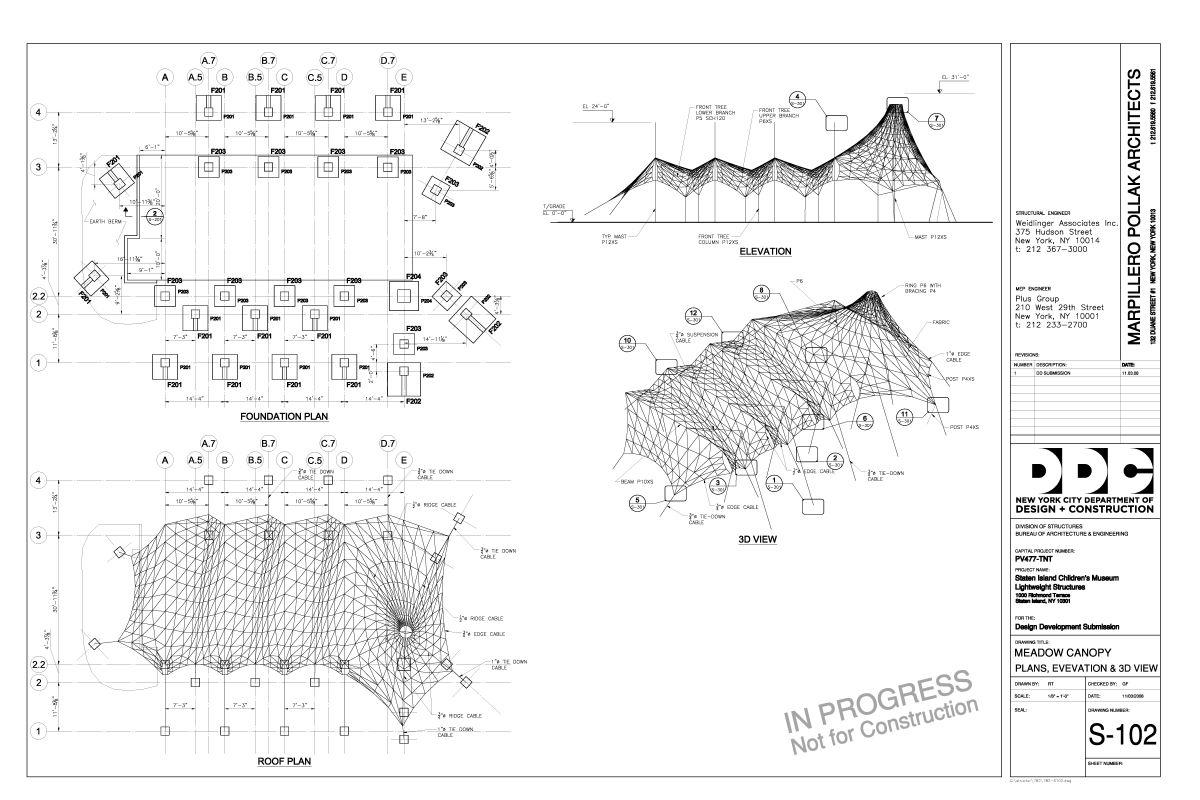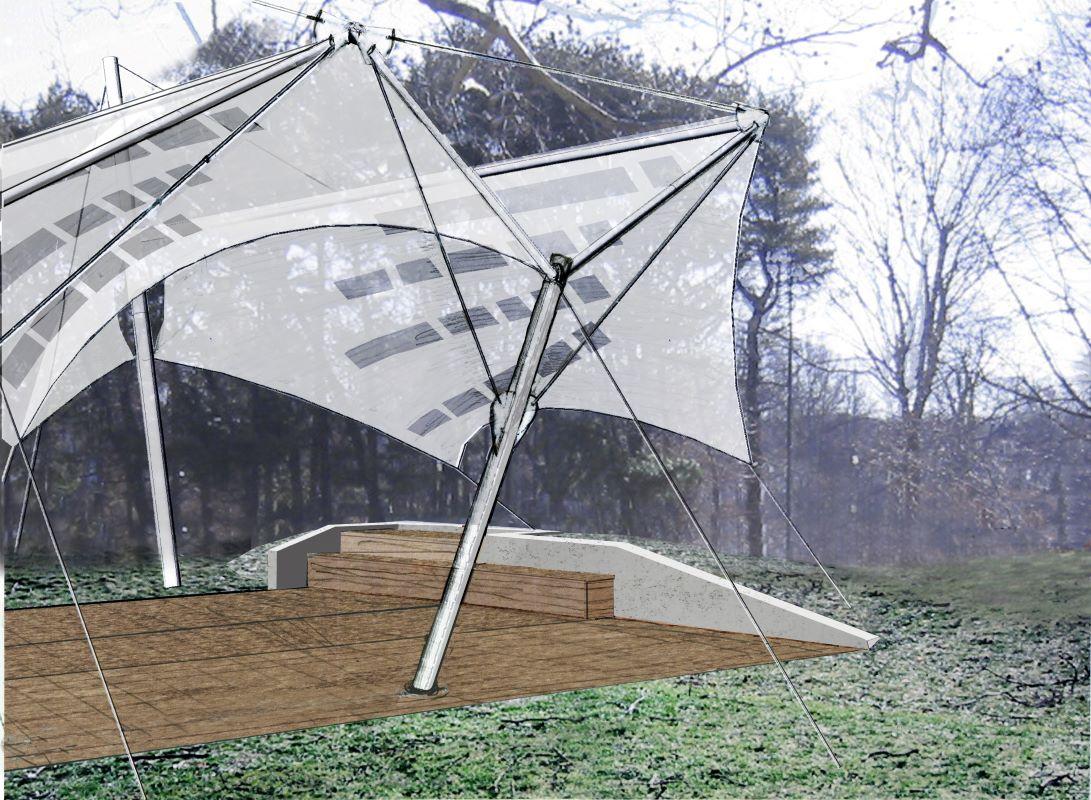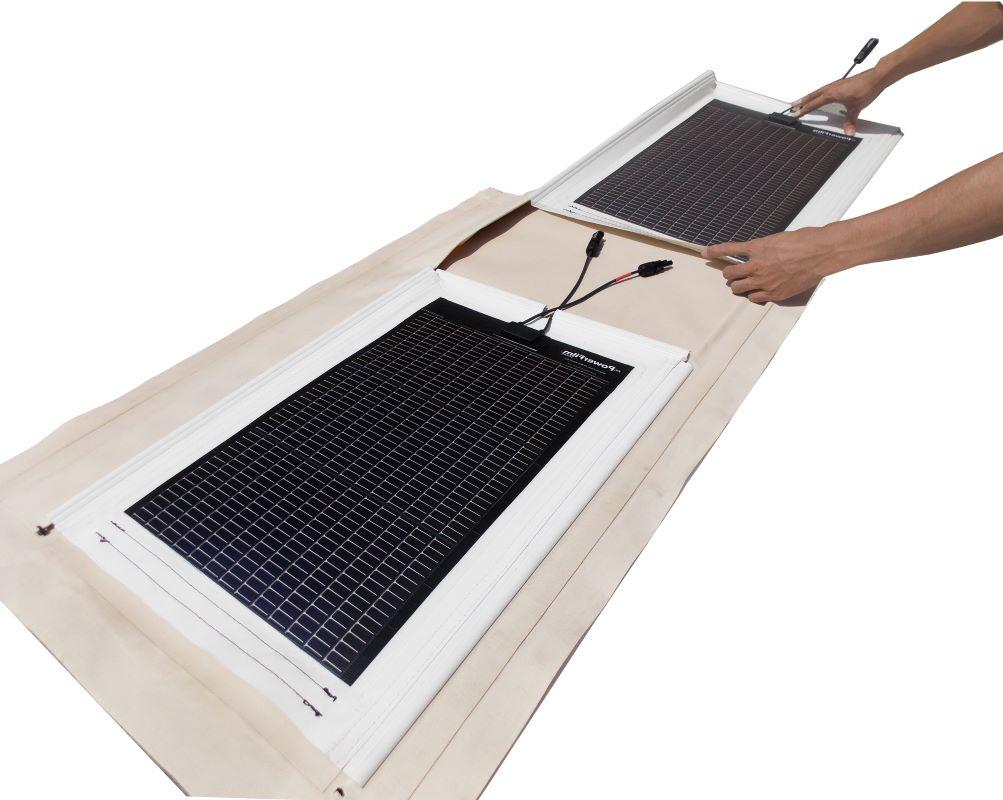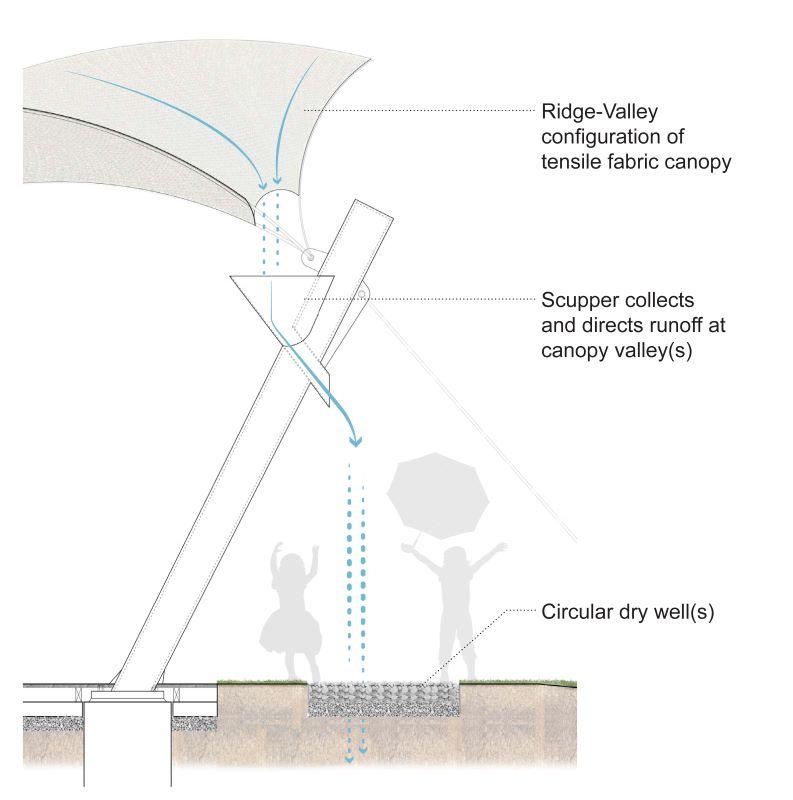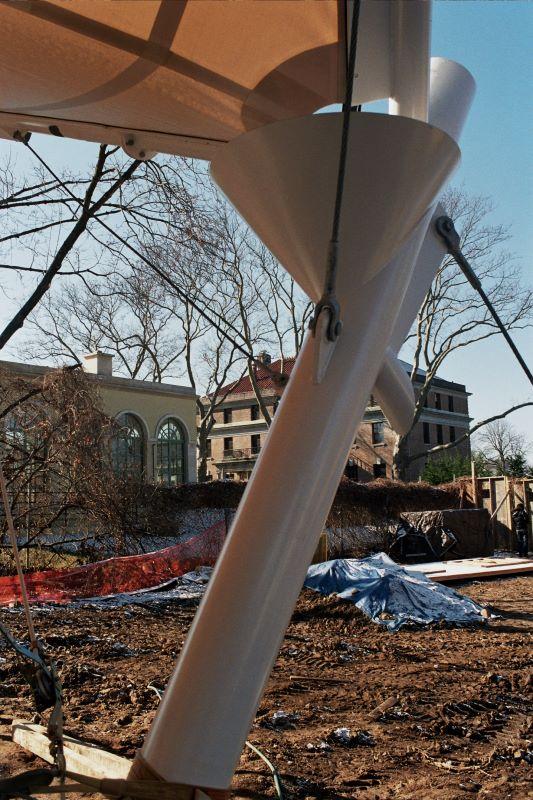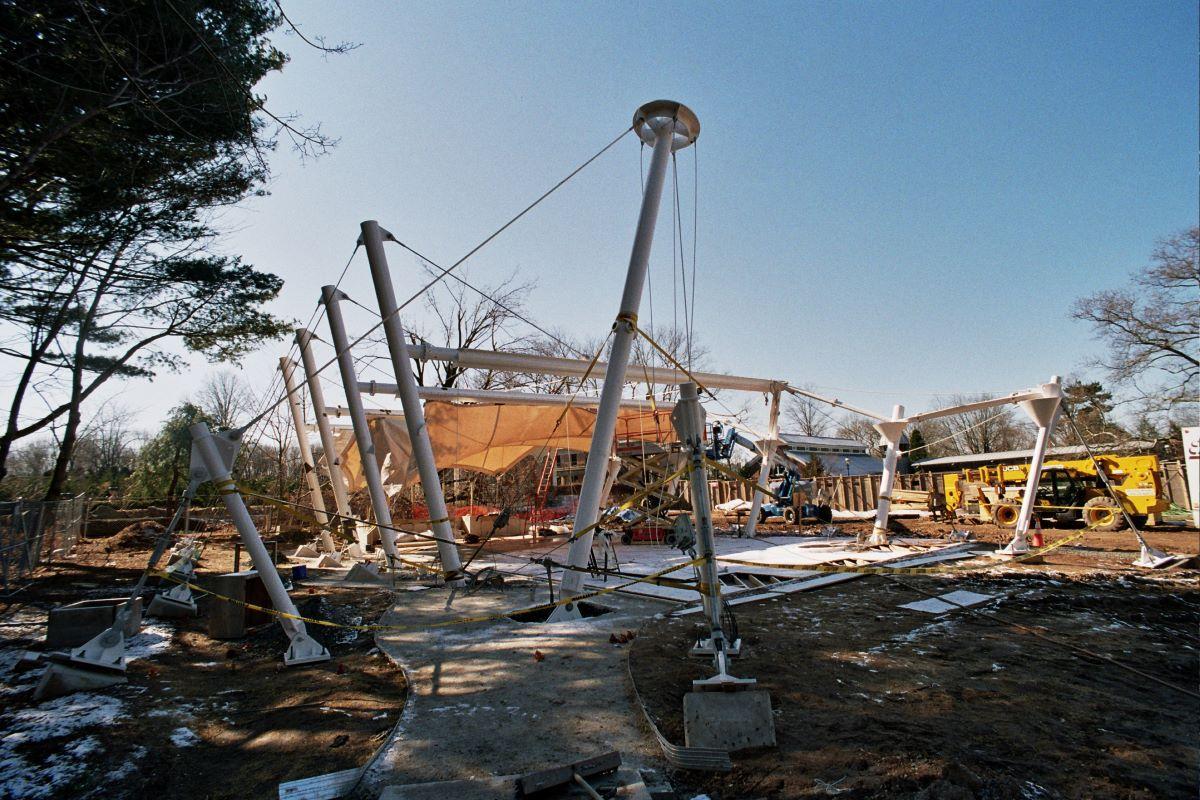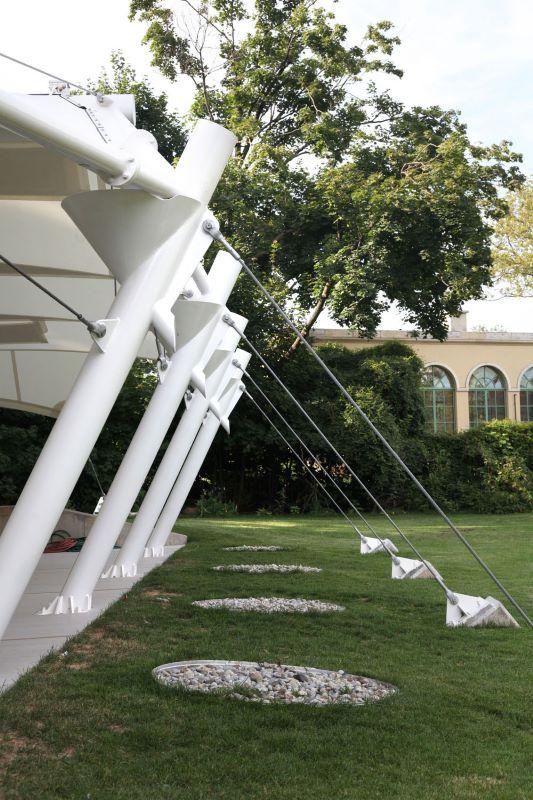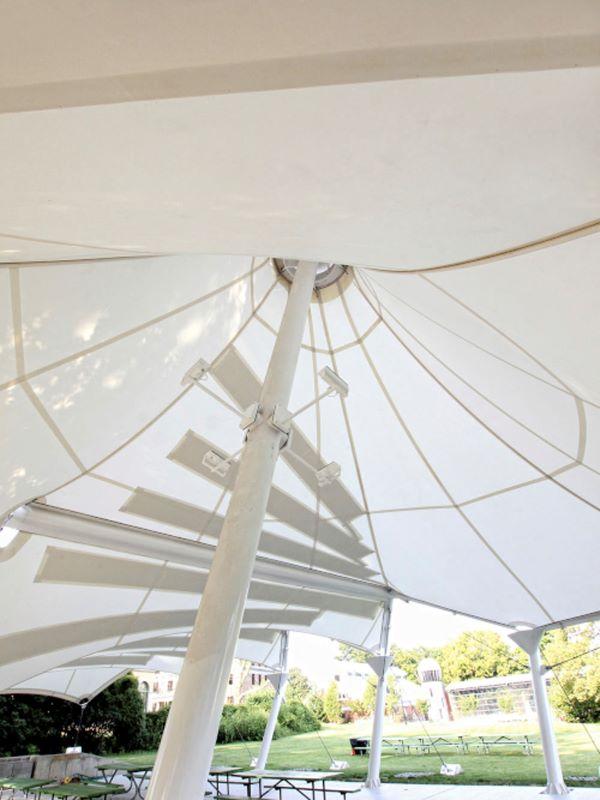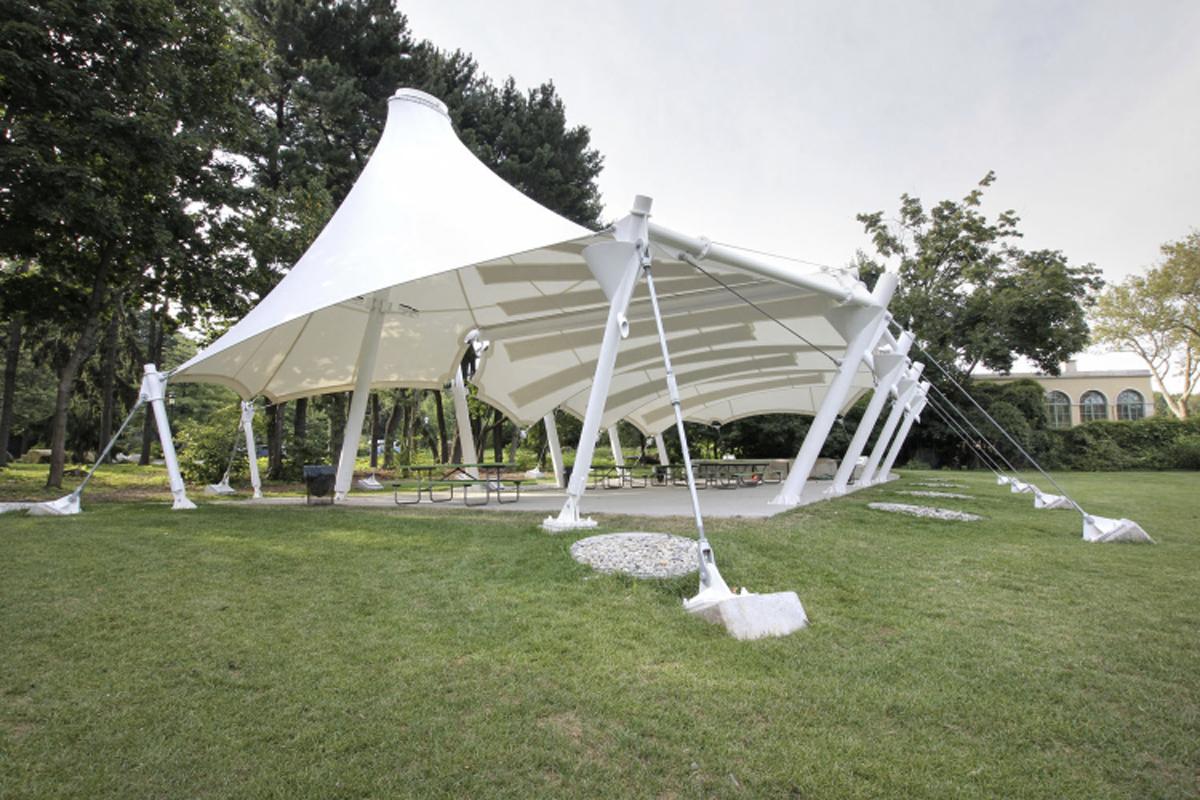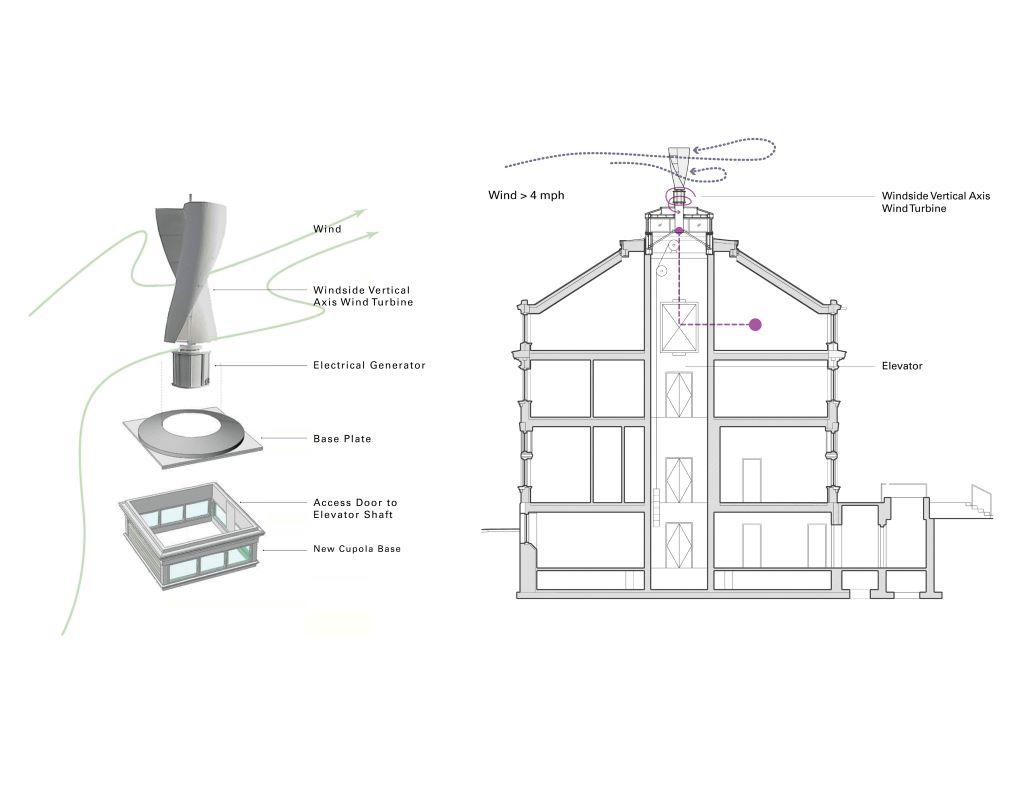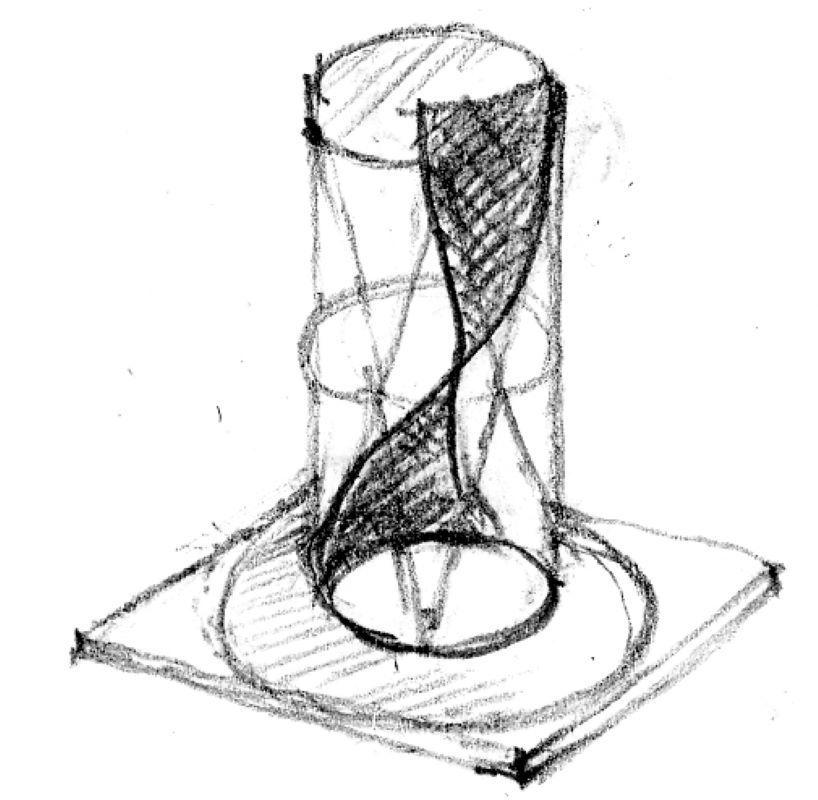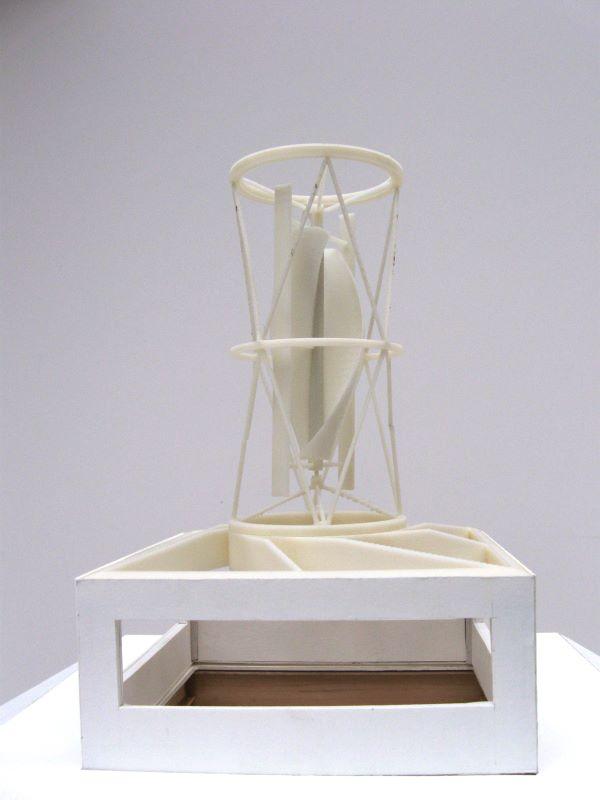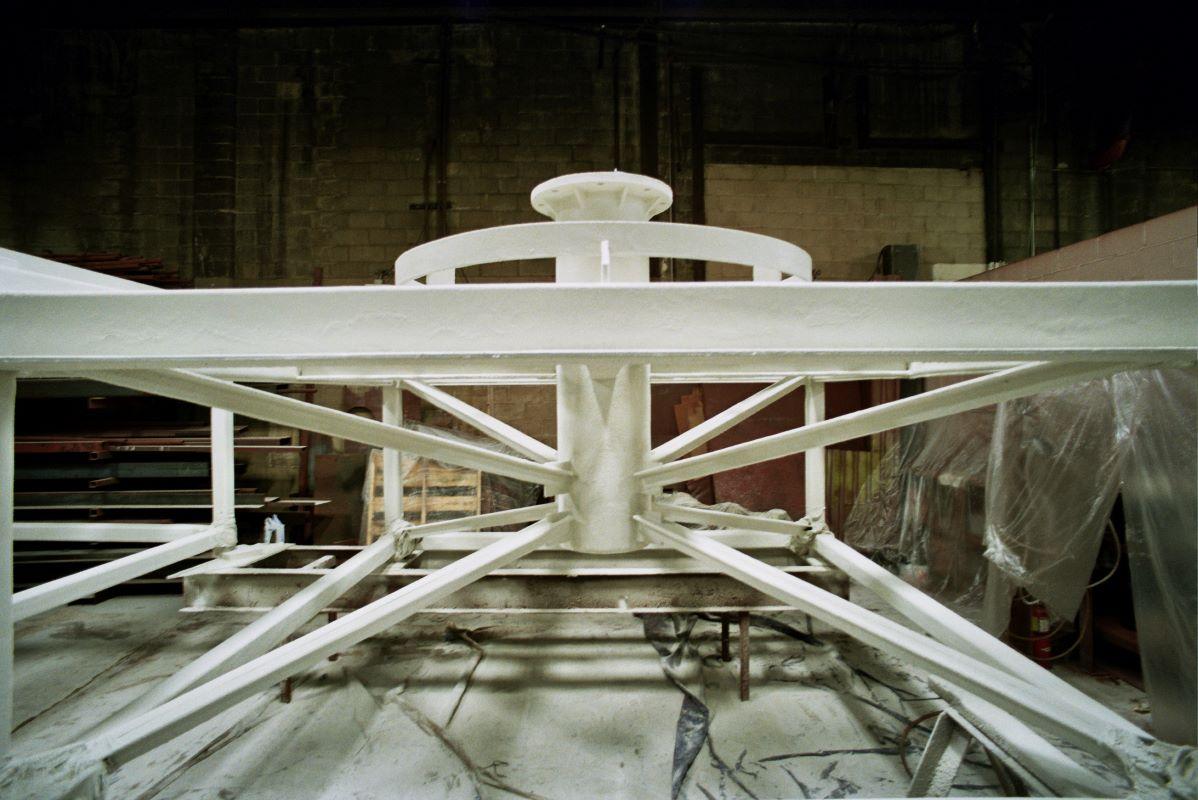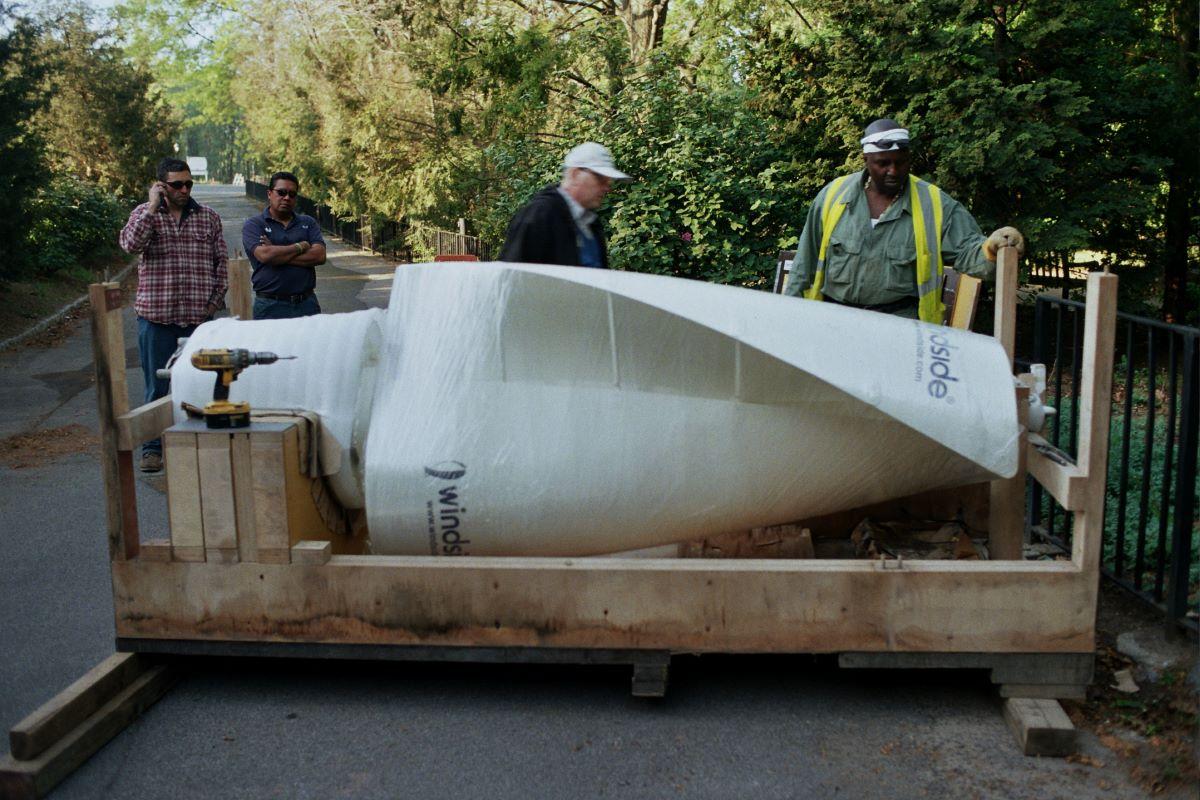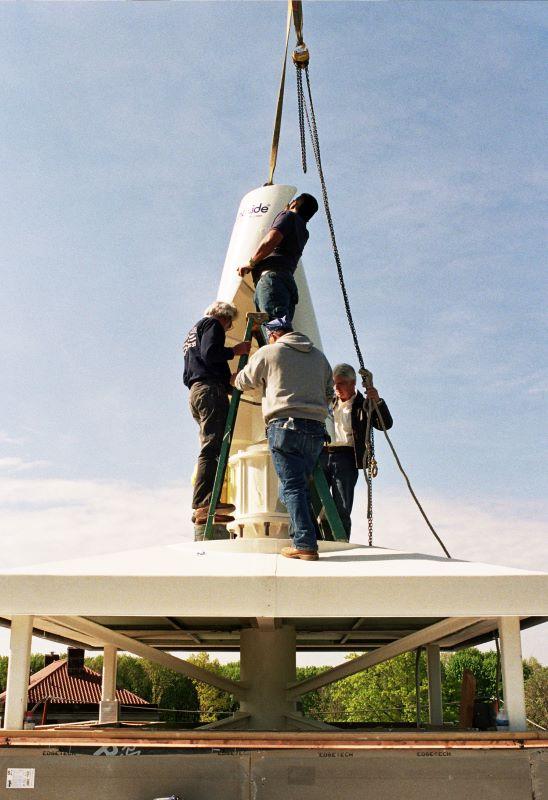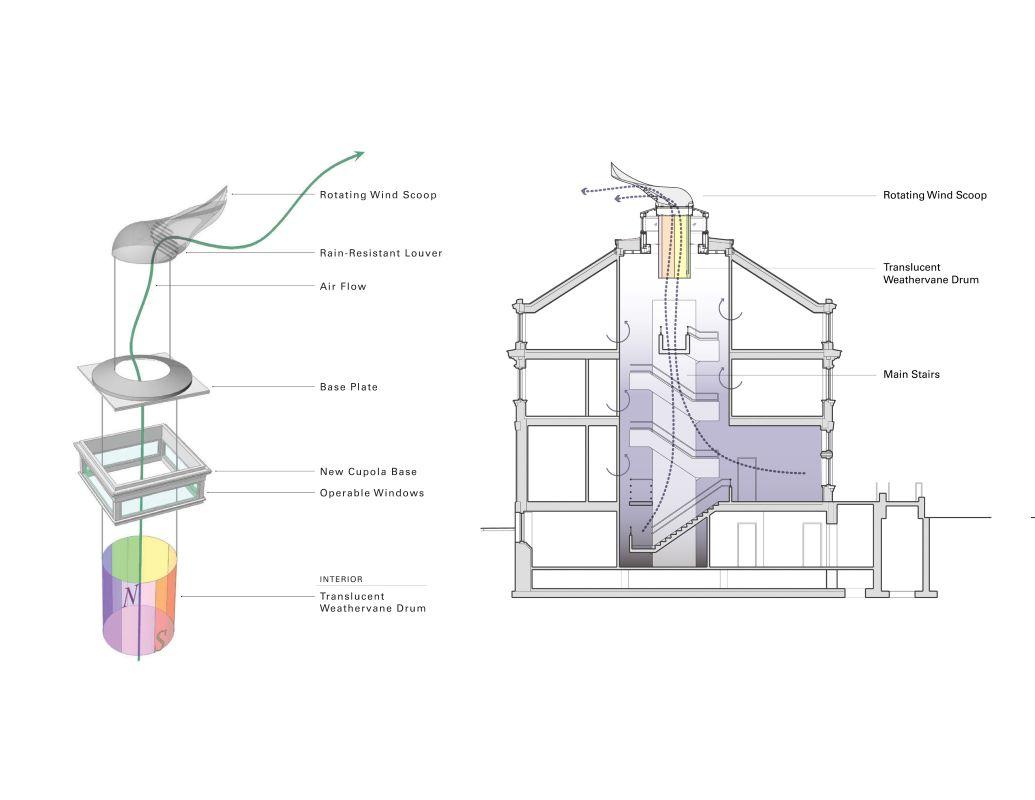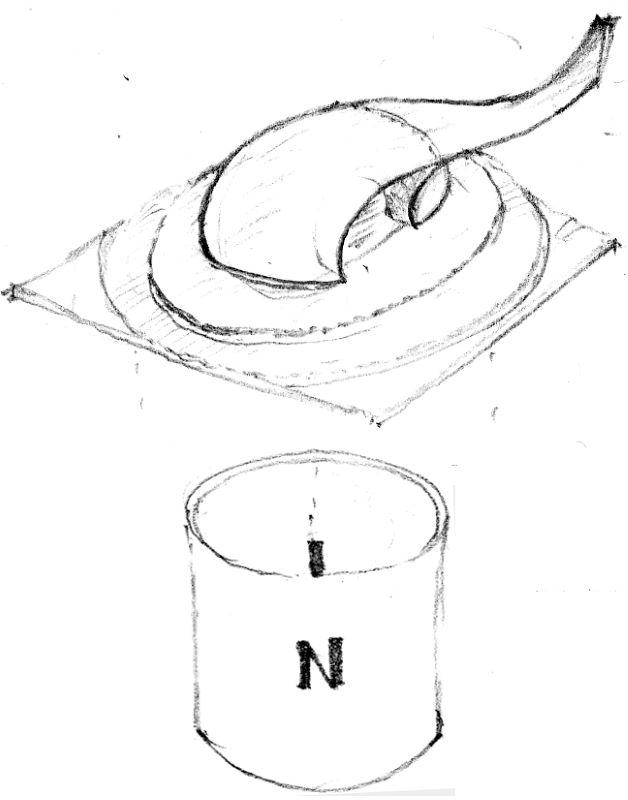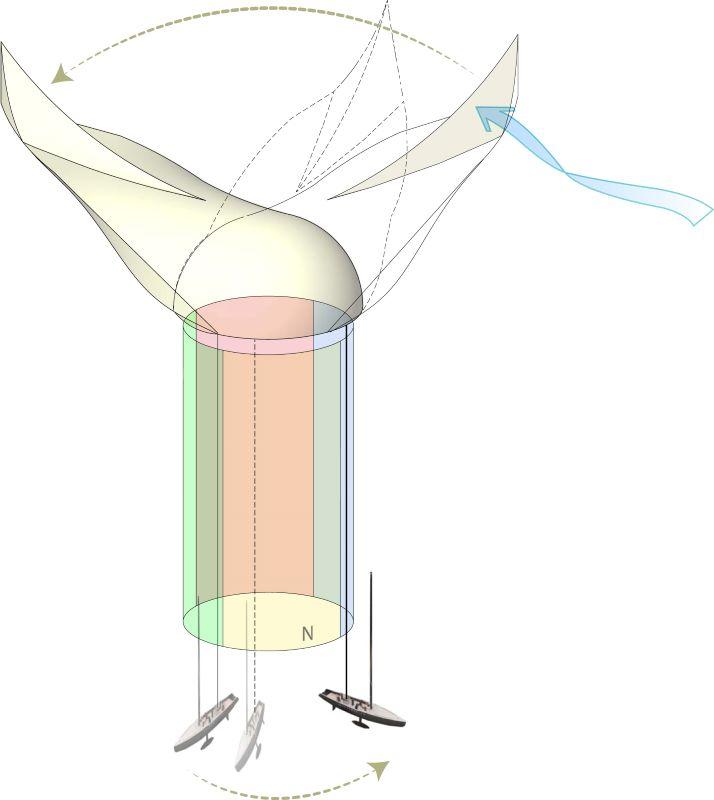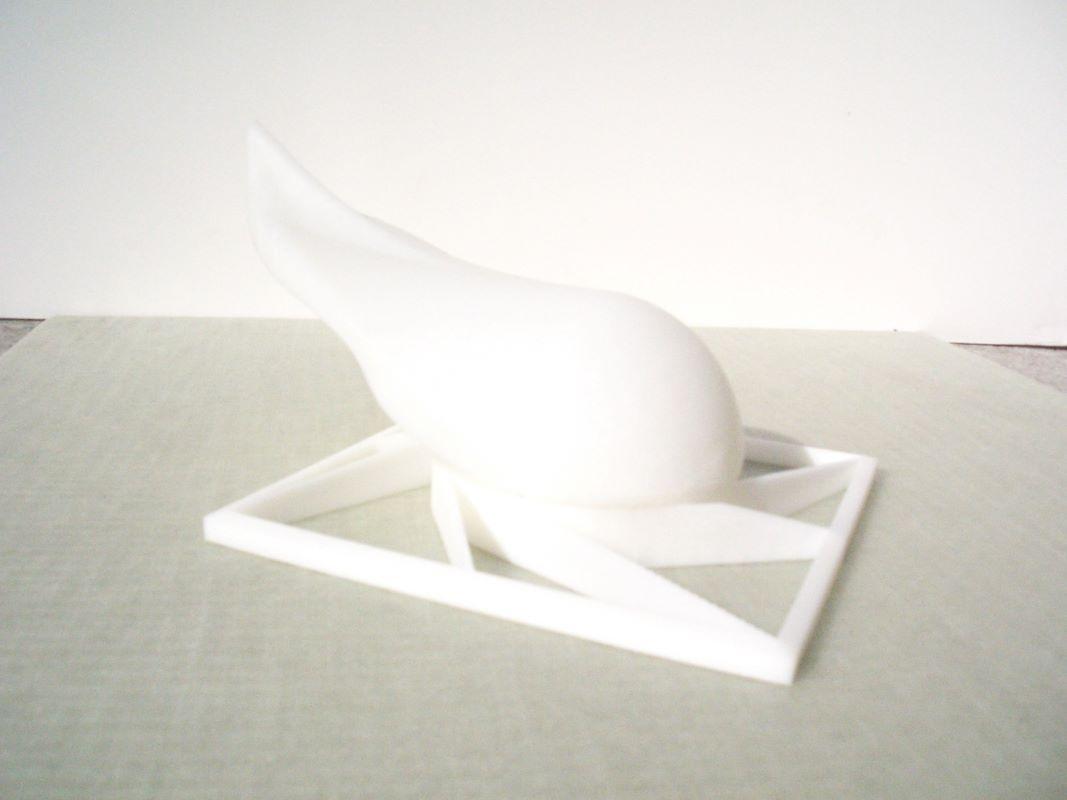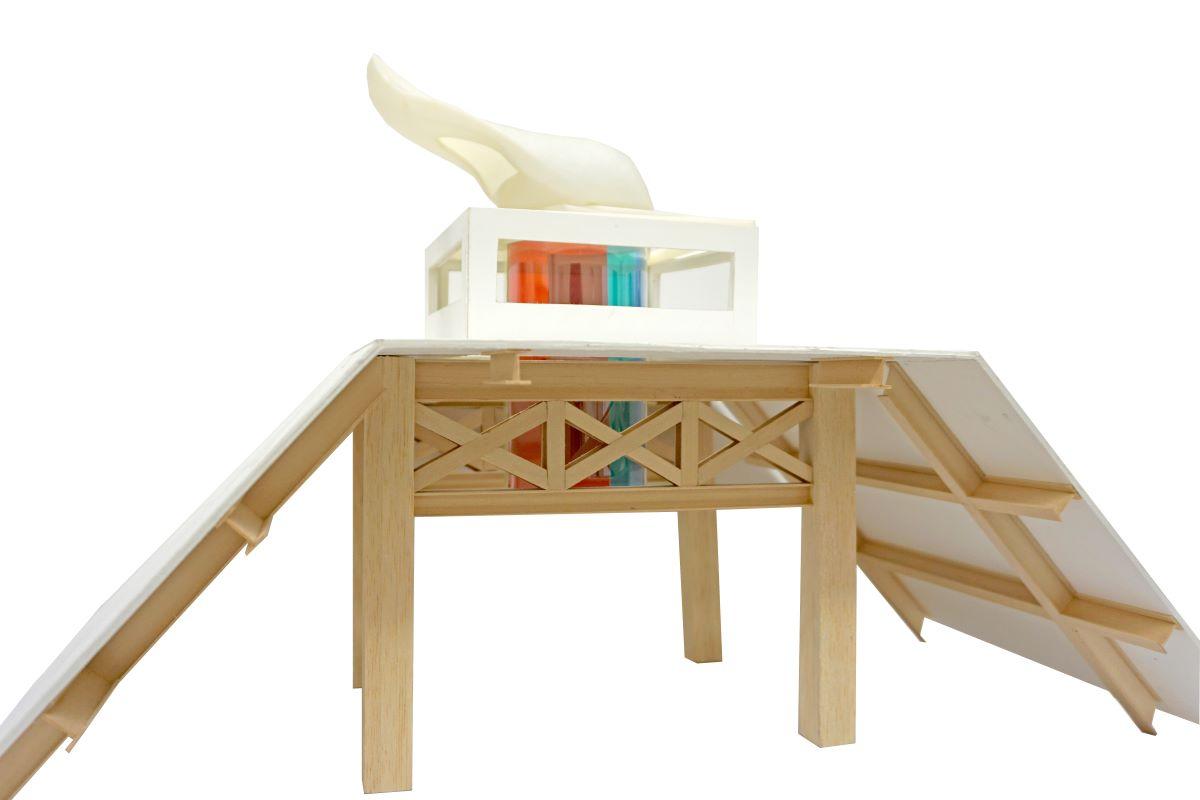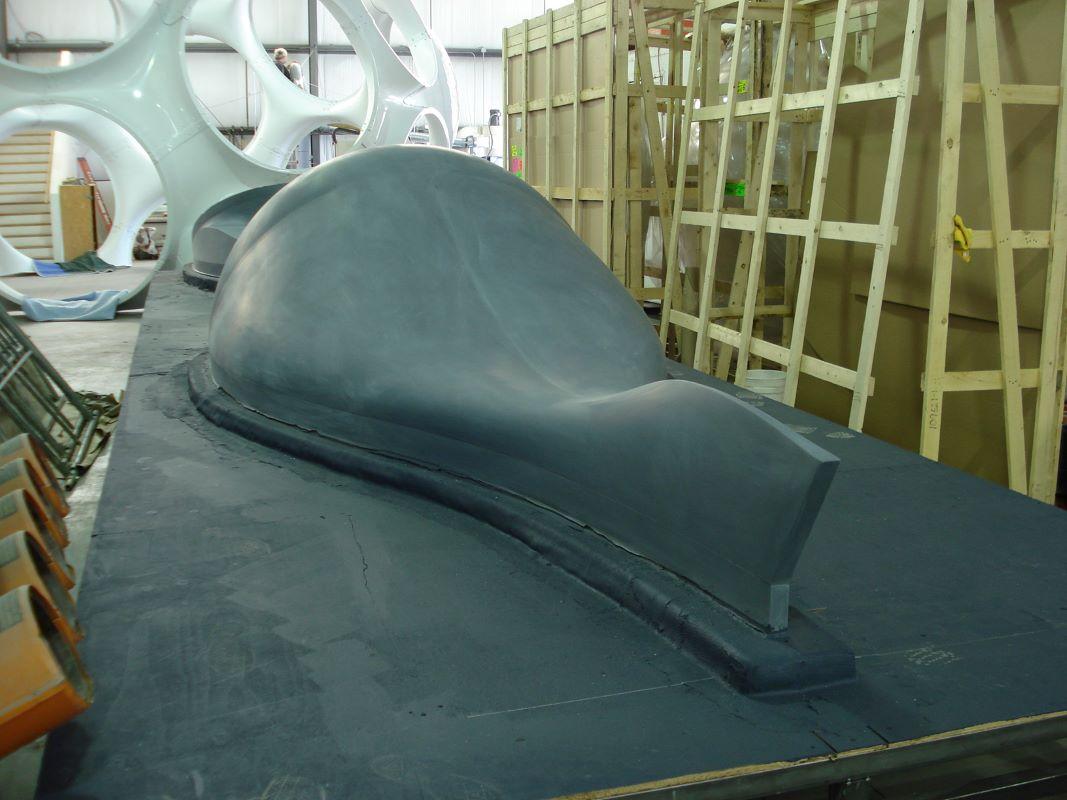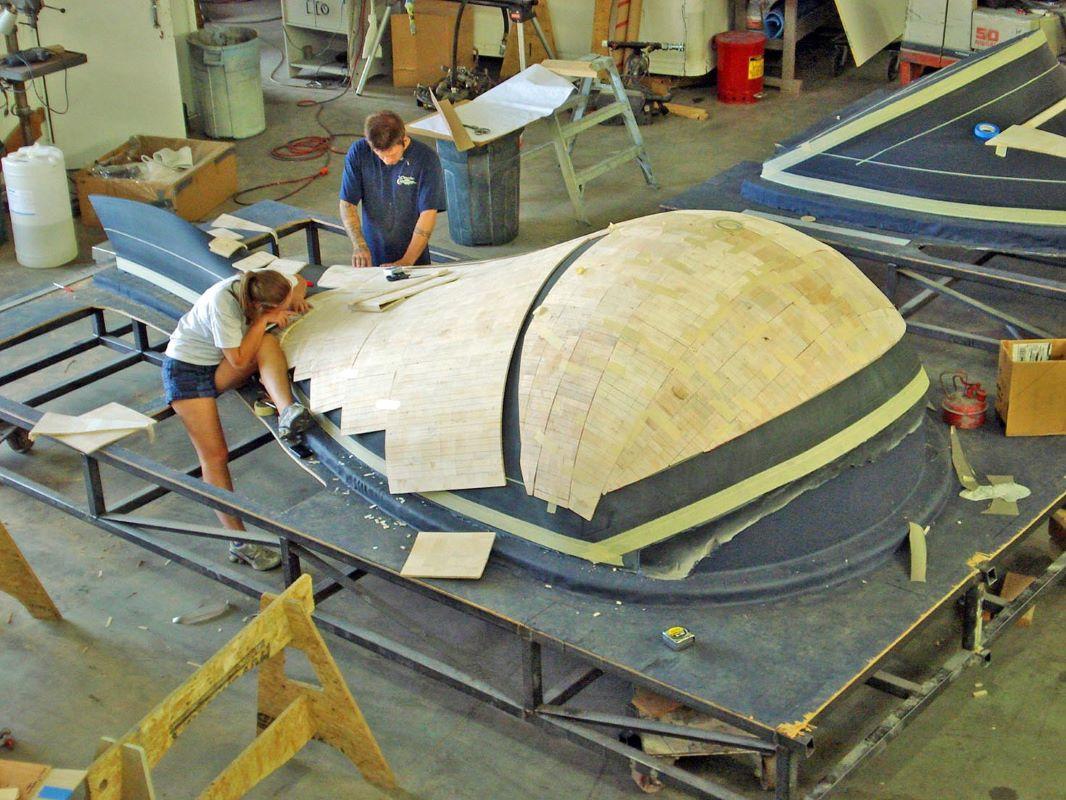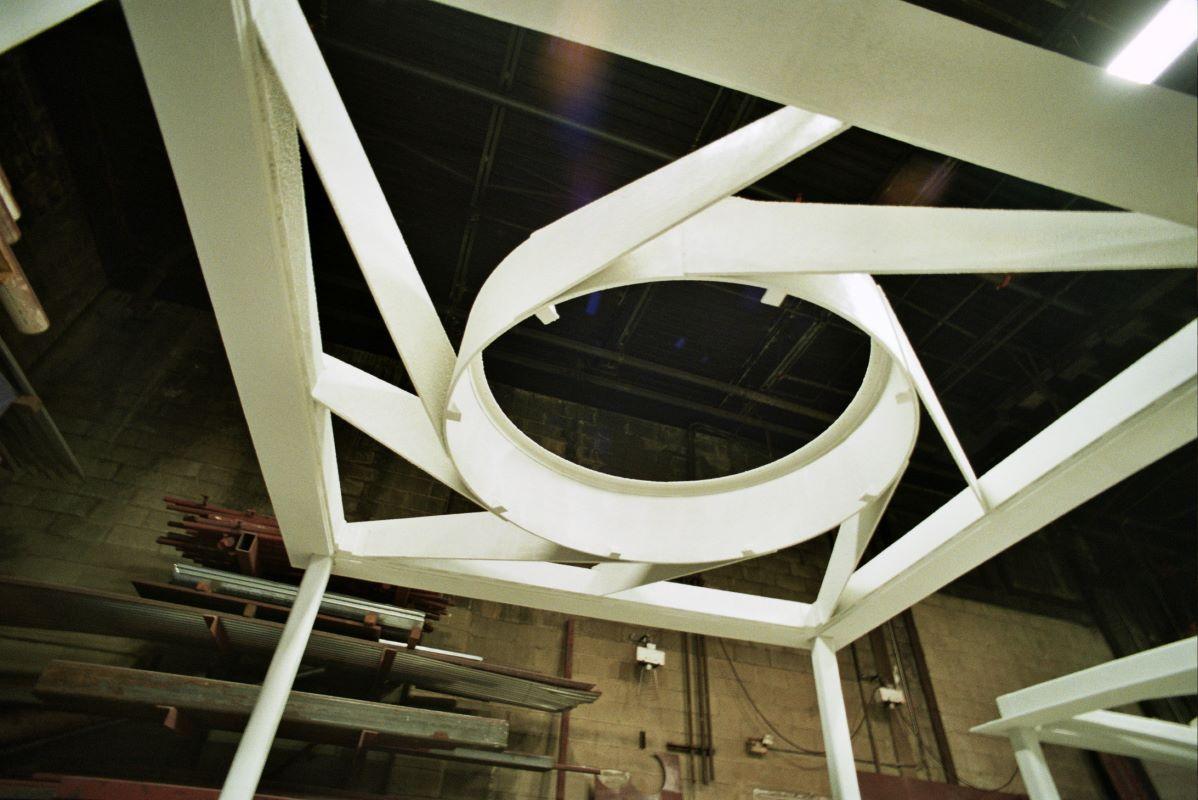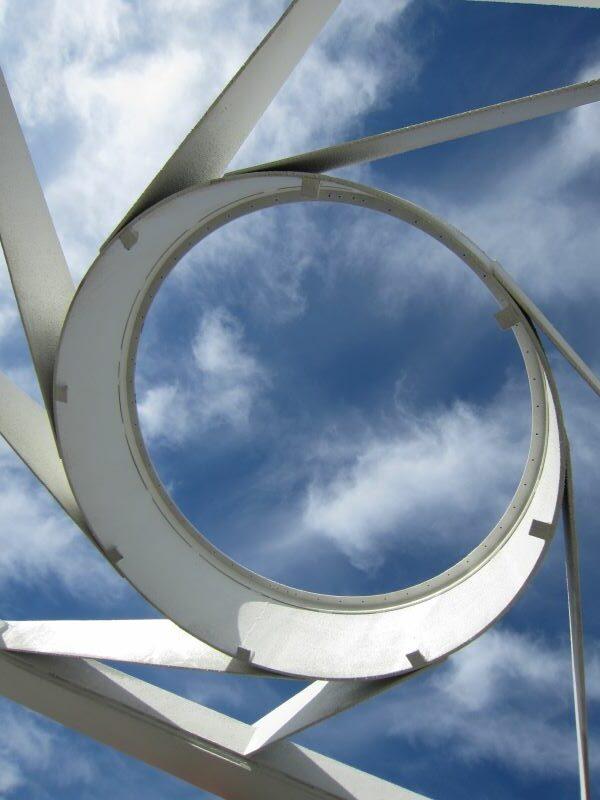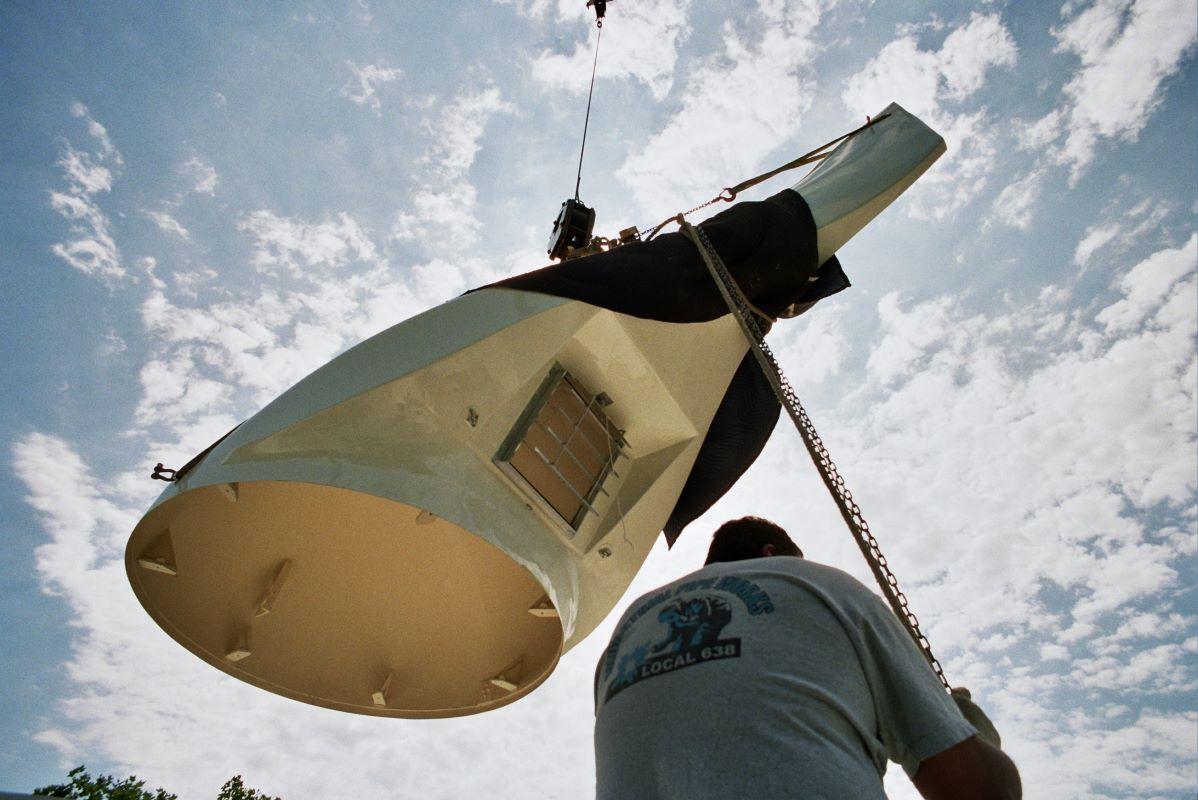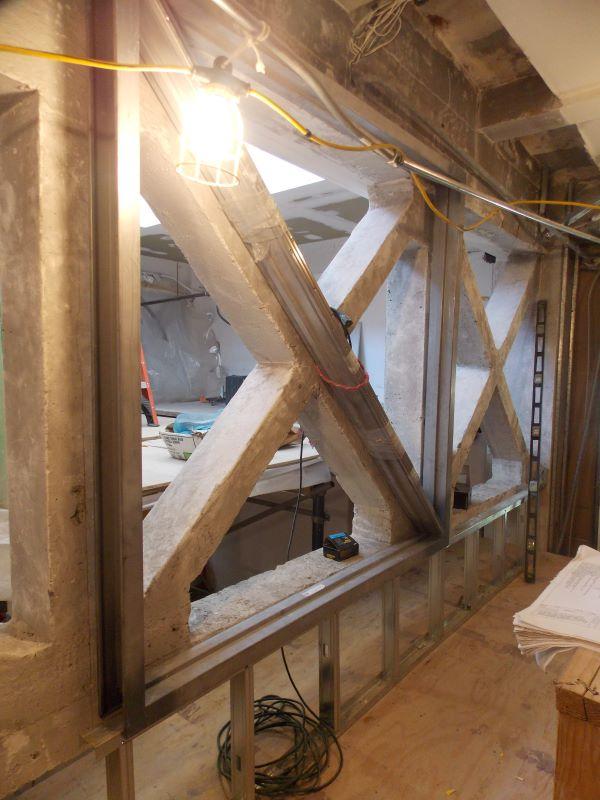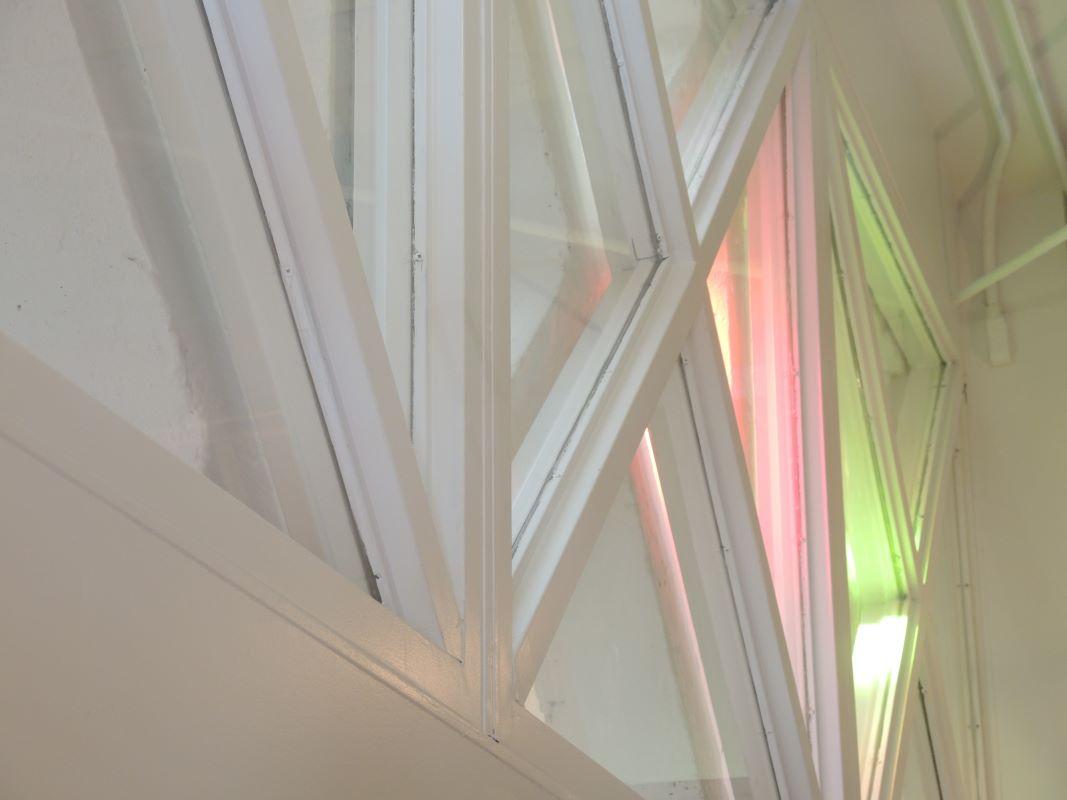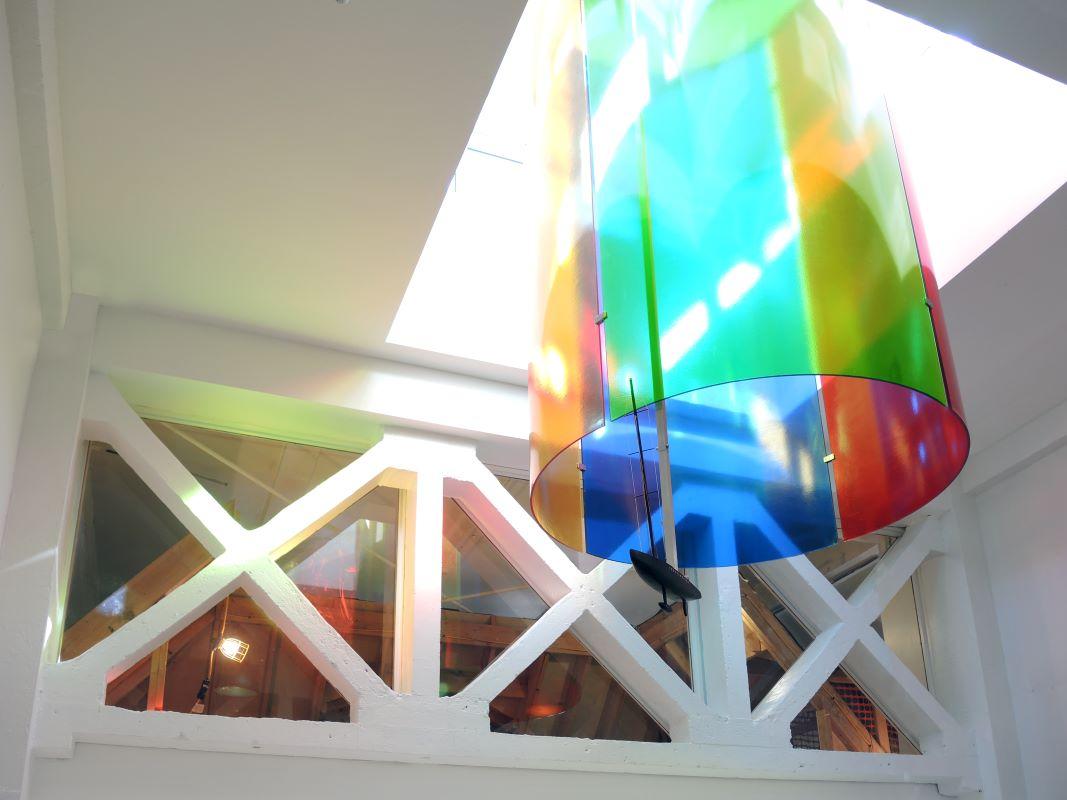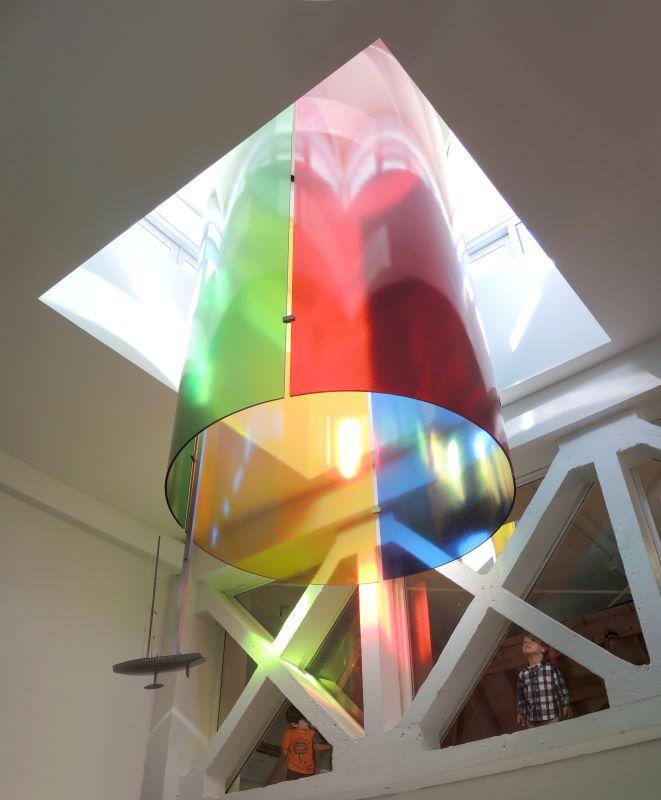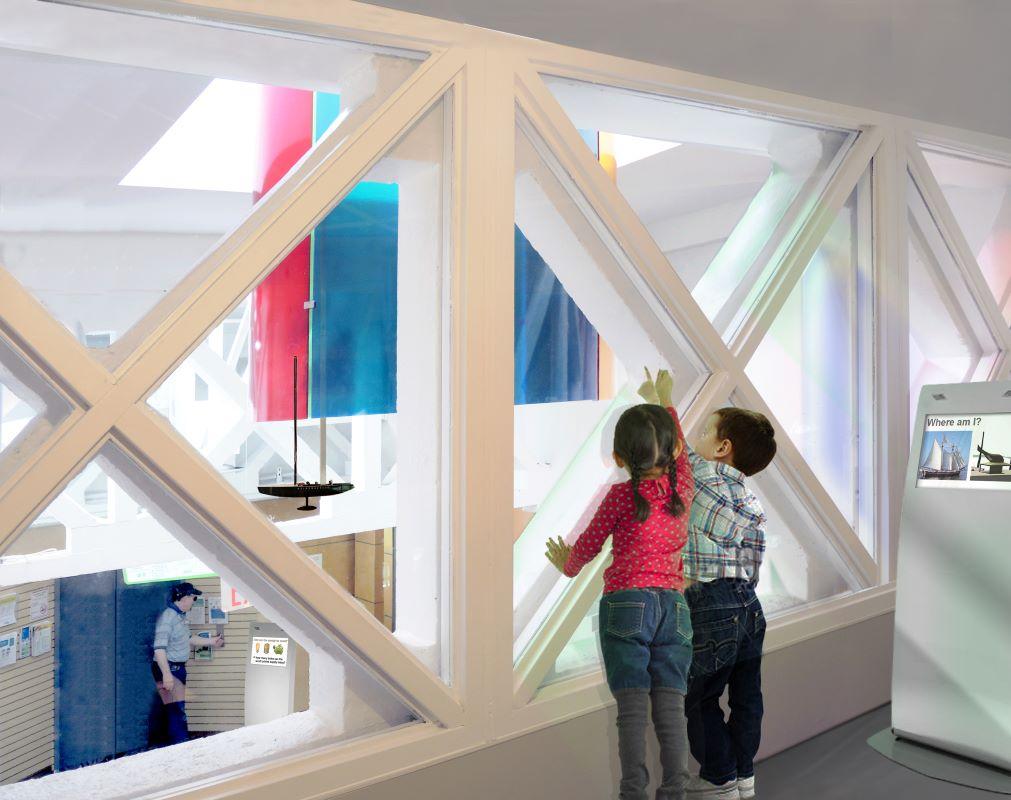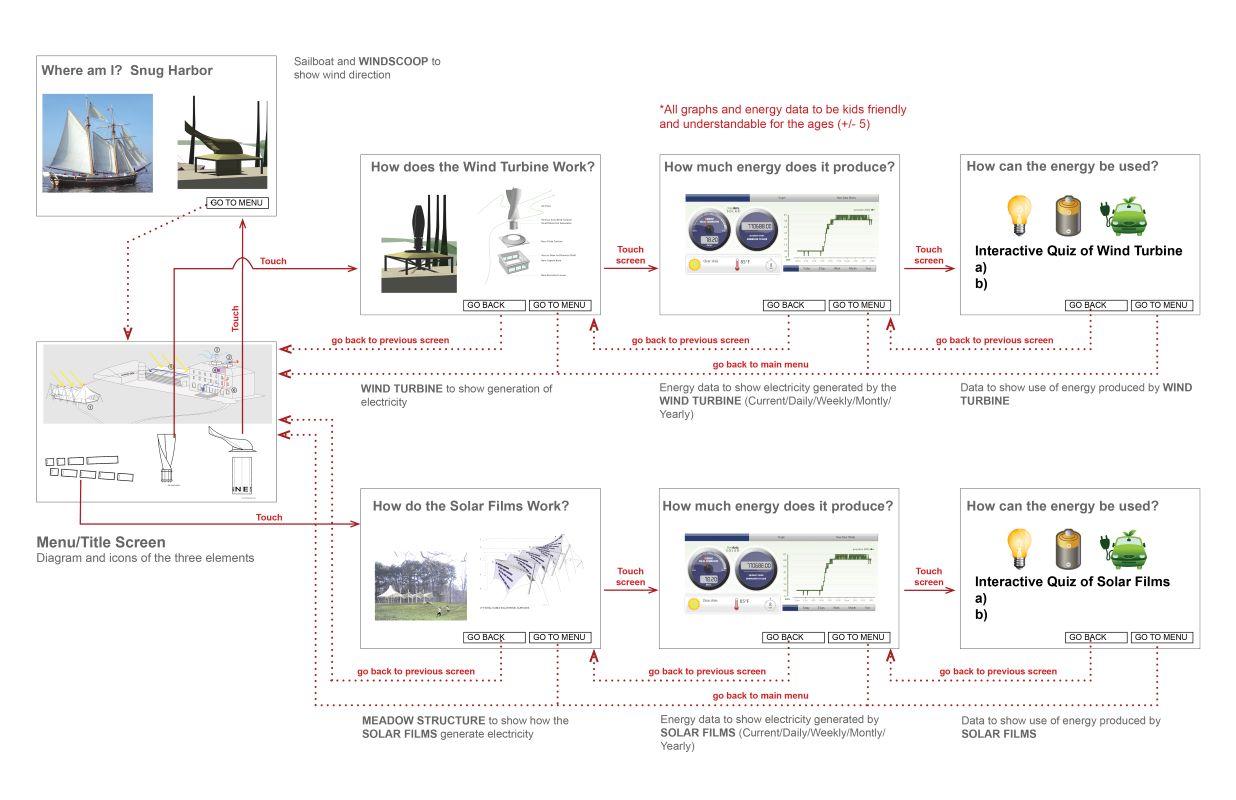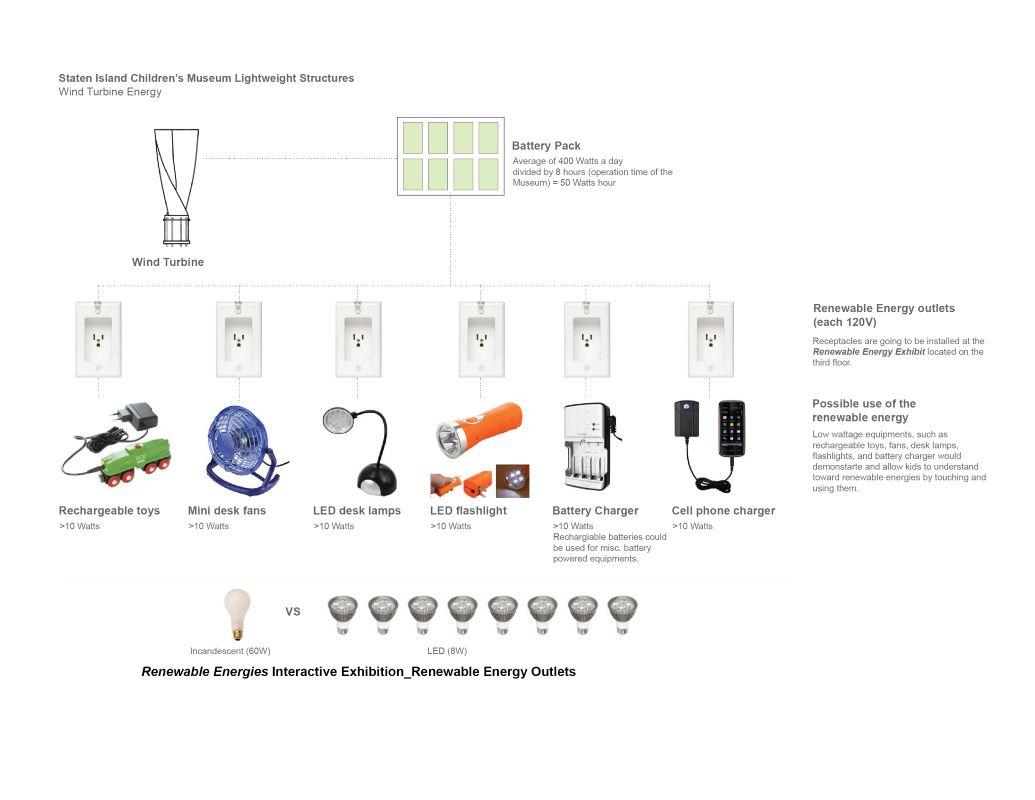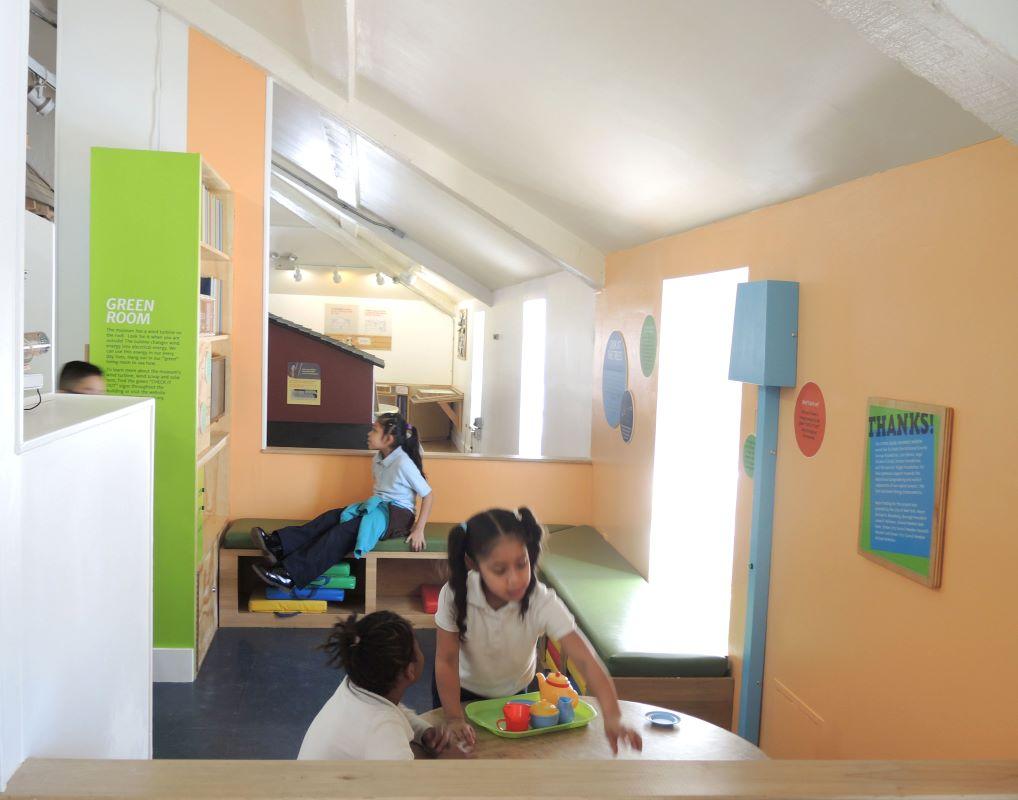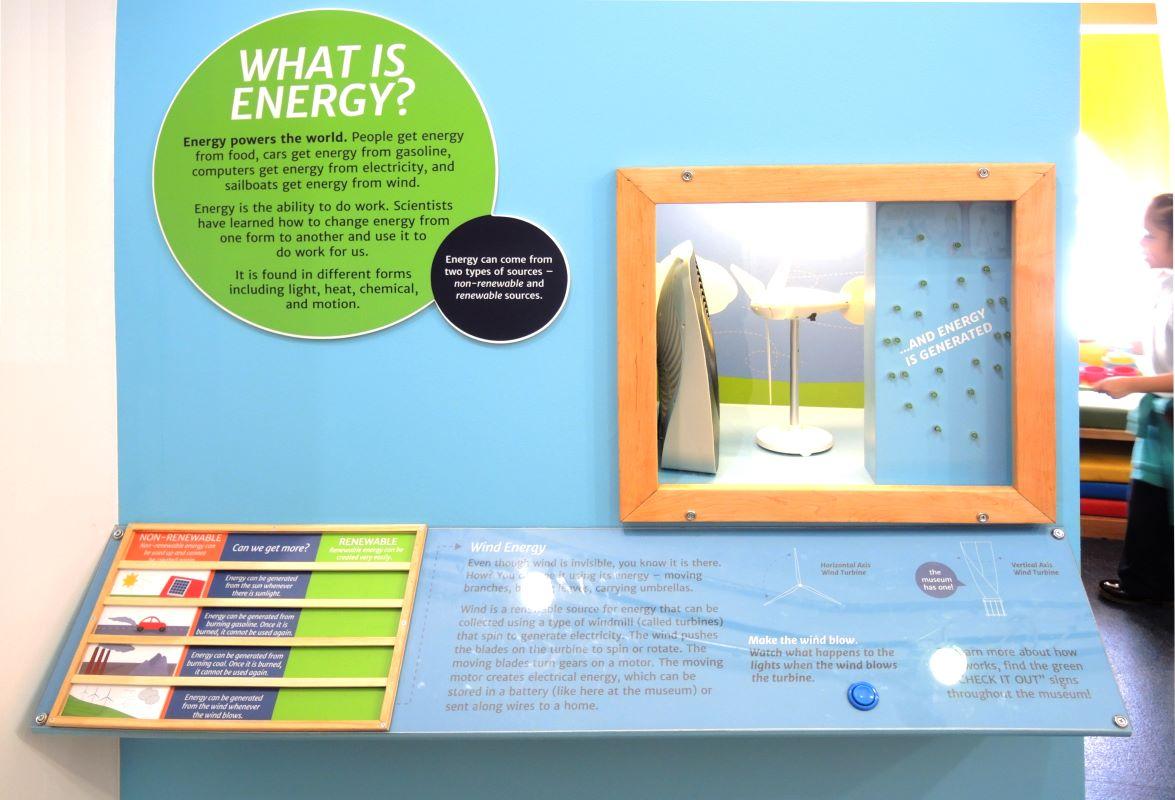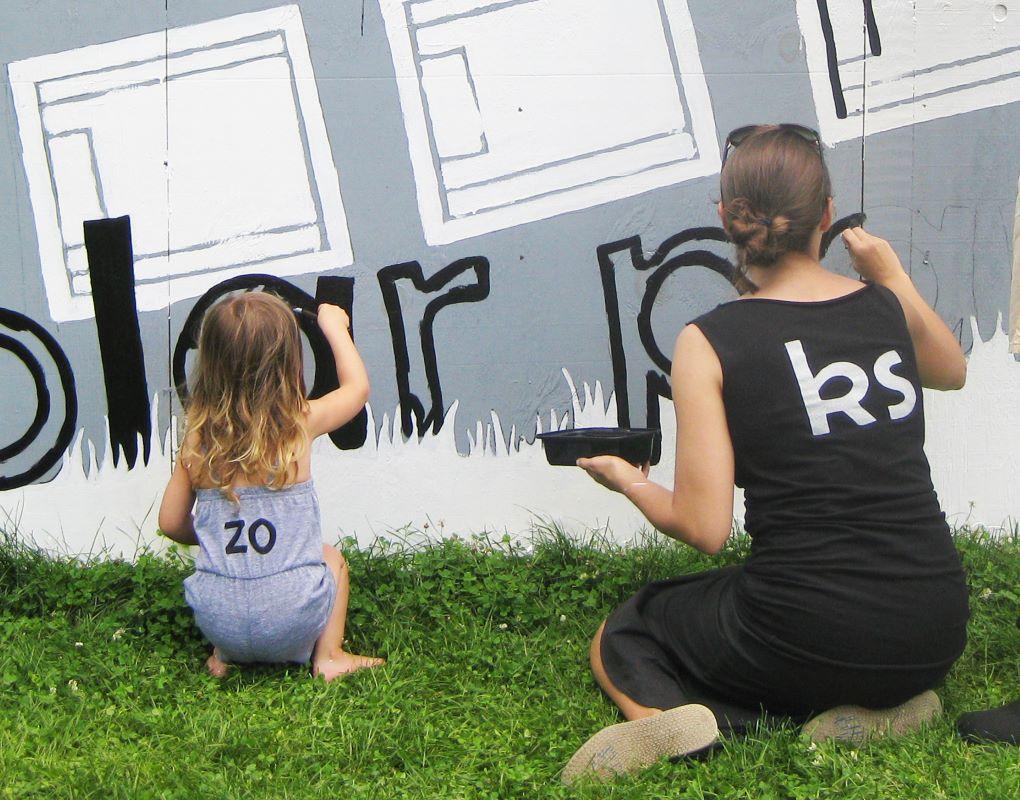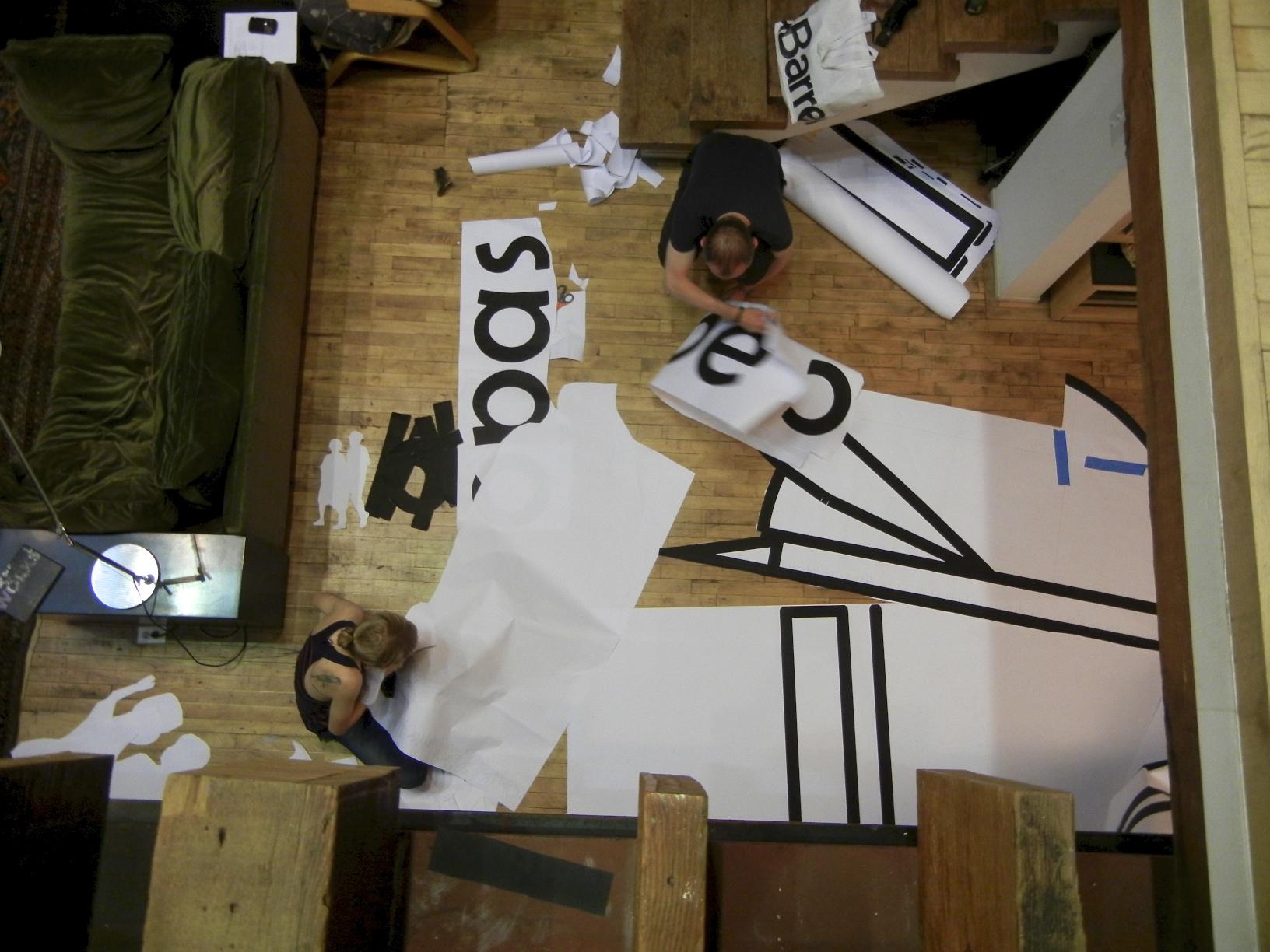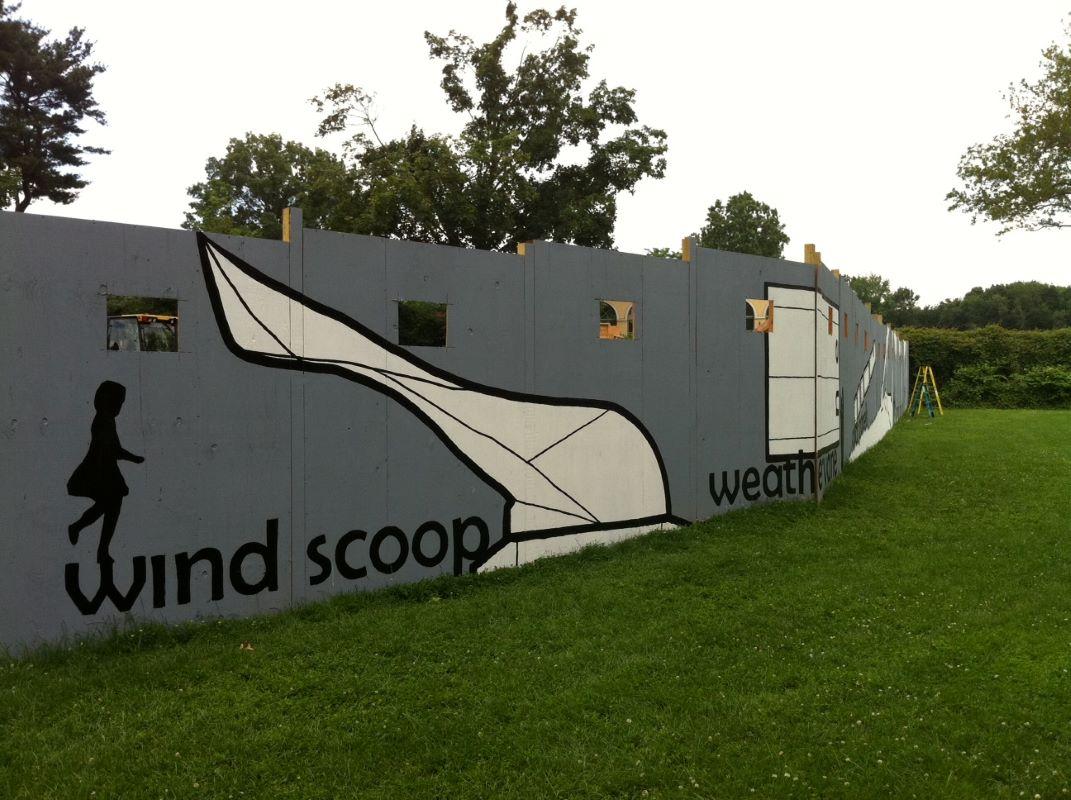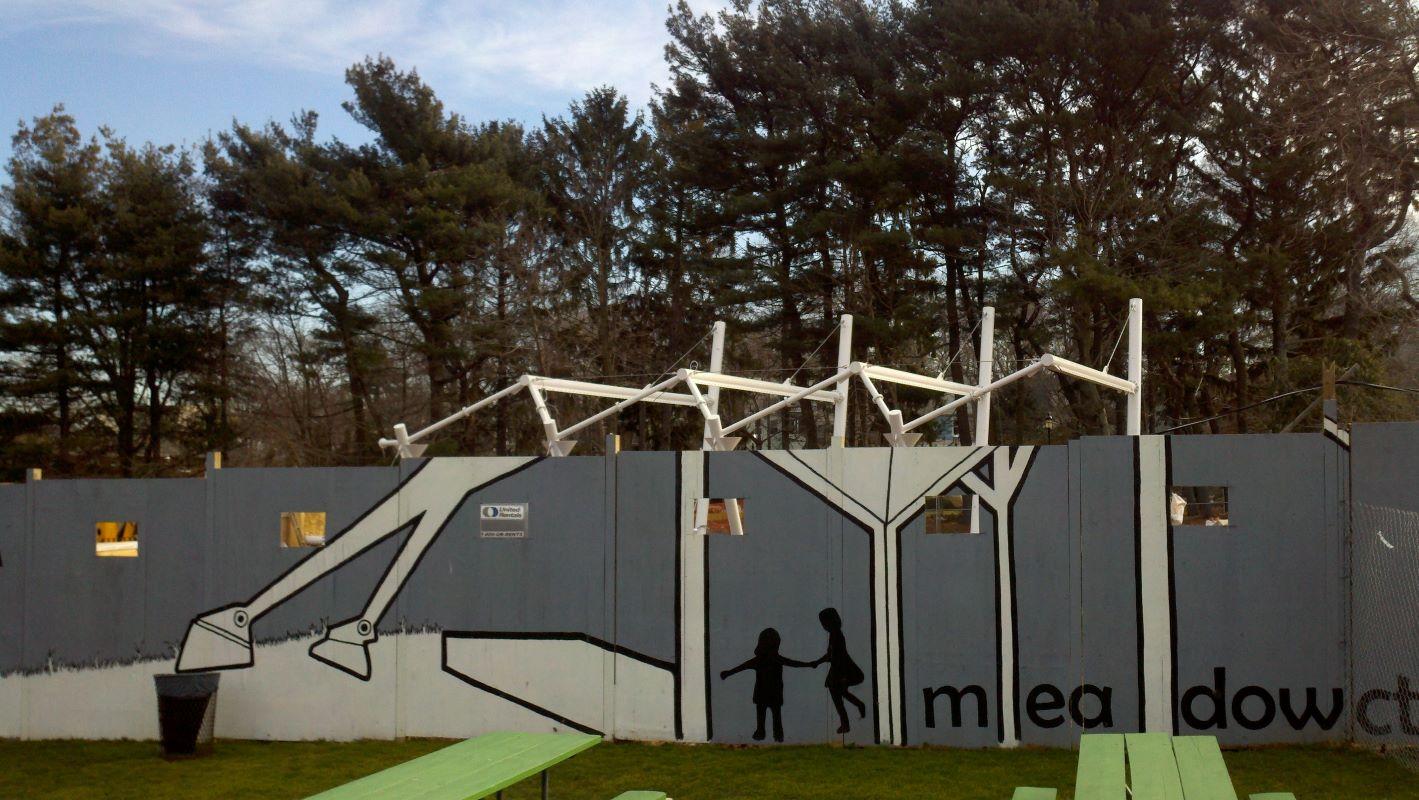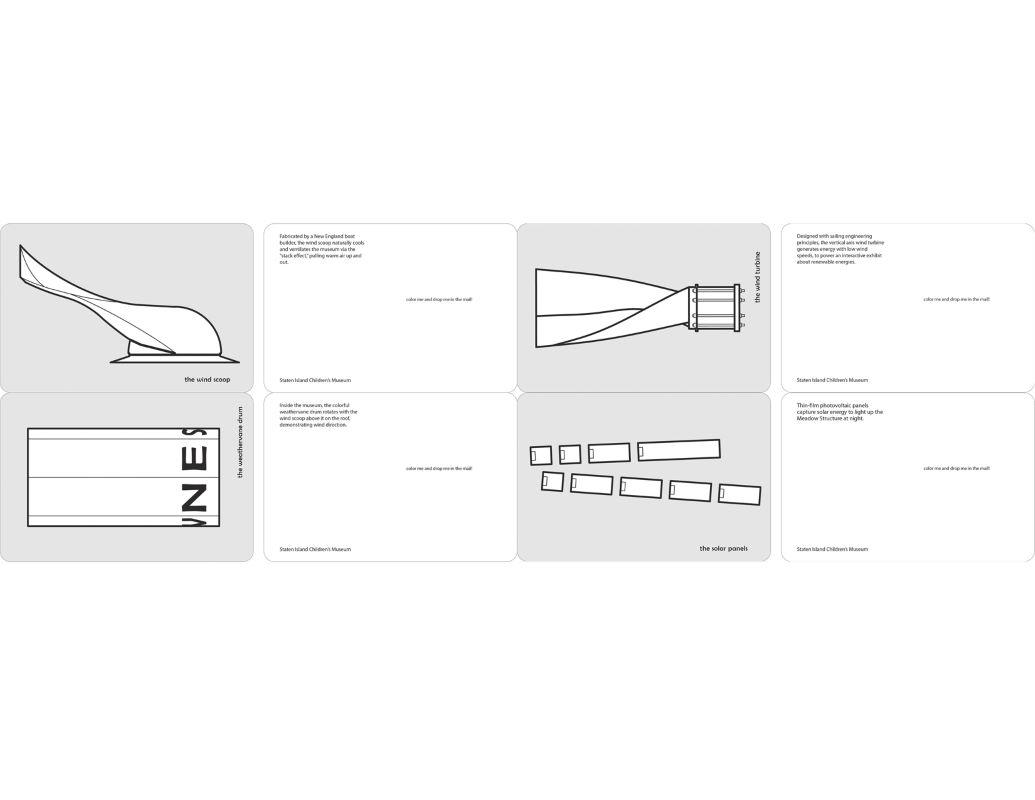Staten Island Children’s Museum Environmental Structures
Staten Island, NY
Expanding the limits of sustainable design
At the Staten Island Children’s Museum (SICM), MPA’s environmental interventions challenge the limits of traditional approaches to ecological sustainability. Inspired by the museum’s location in Snug Harbor, which was a retirement community for former sailors in the early 20th century, MPA used maritime technologies and motifs throughout the design process.
Initially, the museum requested MPA to design a flexible outdoor gathering space to replace the temporary tent that they would rent each summer, and to repair their building’s two existing cupola skylights. The project scope expanded to include the design of three experimental sustainable structures that function as permanent installations. Each intervention is a dynamic and interactive sculpture that is integrated into the life of the institution, the architecture of the existing building, and the flows of the surrounding environment, including the new Renewable Energies exhibit which contributes to children’s and families’ connection with the local environment.
The Wind Scoop and Wind Turbine replace two existing cupola skylights at the main building and harness the power of wind energy, applying long standing sailing principles to 21st century architecture. The 2,000 square foot Meadow Structure located at the edge of the nearby woods takes on the appearance of a full-rigged ship, featuring a sail-like fabric roof that is integrated with photovoltaic panels and supported by a series of masts that maximize the surfaces’ southern exposure. All three of these interventions test and demonstrate sustainable construction technologies by engaging with the natural systems of sun, wind, and water. Together, they strengthen the museum’s connection to its historical and environmental contexts.
Project Team
Wind Turbine: Oy Windside
Photography
Recognition
Design
Concepts
This project explores the relationships between historical and modern technologies, natural and manmade systems, and human and environmental health. The design concepts for the Children’s Museum Environmental Structures were driven by experimentation with innovative renewable energy technologies. The project was the creation of an interwoven field of architectural operations that engage with environmental flows. MPA integrated references from Snug Harbor’s historical maritime culture with modern technologies including 3D modeling, advanced milling techniques, and contemporary materials to create cutting-edge wind devices, photovoltaic power systems, and stormwater management methods.
Elements
Meadow Structure
The Meadow Structure is a space for informal outdoor learning and play, as well as an icon anchor in the Snug Harbor campus. Thin-film photovoltaic panels are inserted into south-facing portions of its translucent fabric roof to capture solar energy and illuminate the canopy. The panels are attached to the tent with ziplock-like connectors that allow for maintenance and replacement. MPA designed a drainage system for the canopy that leads rain and runoff into funnel-shaped scuppers integrated into the masts. The water is directed towards and deposited into a series of circular dry wells that surround the structure and distribute the water evenly into the ground through new drainage swales.
Wind Turbine
At the museum’s roof, MPA replaced two existing cupola skylights with a Wind Scoop and Wind Turbine to introduce wind as a renewable energy source to the museum. The Wind Turbine, which is above the elevator and replaces a non-functioning skylight, transforms the force of low wind speed into electrical power. Its unique spiral vane shape and precise speed of its rotation makes it totally soundless and safe for flying birds, as they perceive the turbine as a column. The Wind Turbine, manufactured by the Finnish company Oy Windside, is a first-time application in the US of European advanced environmental technology, capable of operating with the lowest wind force (2 m/sec).
Wind Scoop
In collaboration with Eric Goetz of Goetz Custom Boats, MPA designed a custom fiberglass rotating Wind Scoop, complemented with a rotating colored drum. The Wind Scoop extracts hot air from the museum’s main stairwell through its adjustable louver as a passive way of ventilating the main stairwell. The drum, which is part of an interactive display, indicates the direction of the wind while light passes through its translucent colored panels to animate the surrounding space. The Wind Scoop also acts as an iconic way-finding device within Snug Harbor’s campus of more than 40 buildings.
Trusses
Part of MPA’s intervention involved exposing the concrete trusses surrounding what became the Renewable Energies exhibit and installing fire-rated glazing so that viewers can observe the Wind Scoop in action. An elevated viewing platform allows children and families to engage with the Wind Scoop from a safe place.
Learning and Engagement
Renewable Energies Exhibit
All three installations are features of a new interactive exhibit called Renewable Energies. The exhibit, which is powered by the energy from the Wind Turbine, features interactive touch-screen displays that show real time data from the Meadow Structure’s photovoltaic panels and the Wind Turbine, allowing children and families to learn about sustainable energy in action. These interactive experiences stimulate awareness of the importance of sustainable design, leveraging the role of a children’s museum as a catalyst for change.
Construction Fence
MPA found ways to engage with museum-goers during the construction phase by painting the Construction fence that surrounded the Meadow Structure as it was being built. The paintings along the outside of the fence depicted full-scale black and white elevations of the Wind Scoop, Wind Turbine, and Meadow Structure. The fence also featured a series of windows at different heights that allowed people to observe the construction process. A series of postcards produced alongside the fence installation gave children the opportunity to interact with the structures in play.


